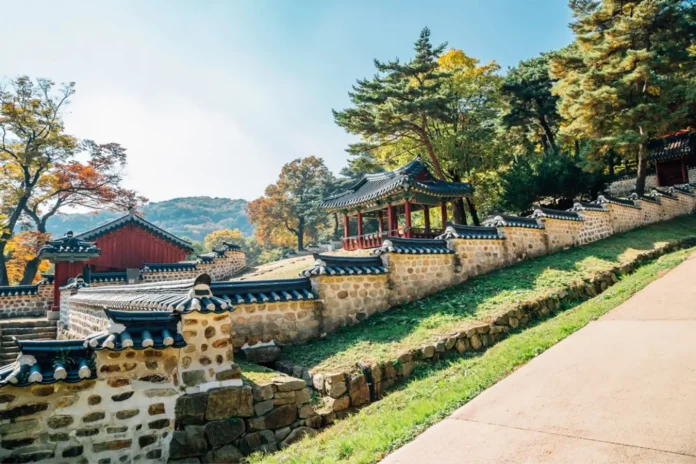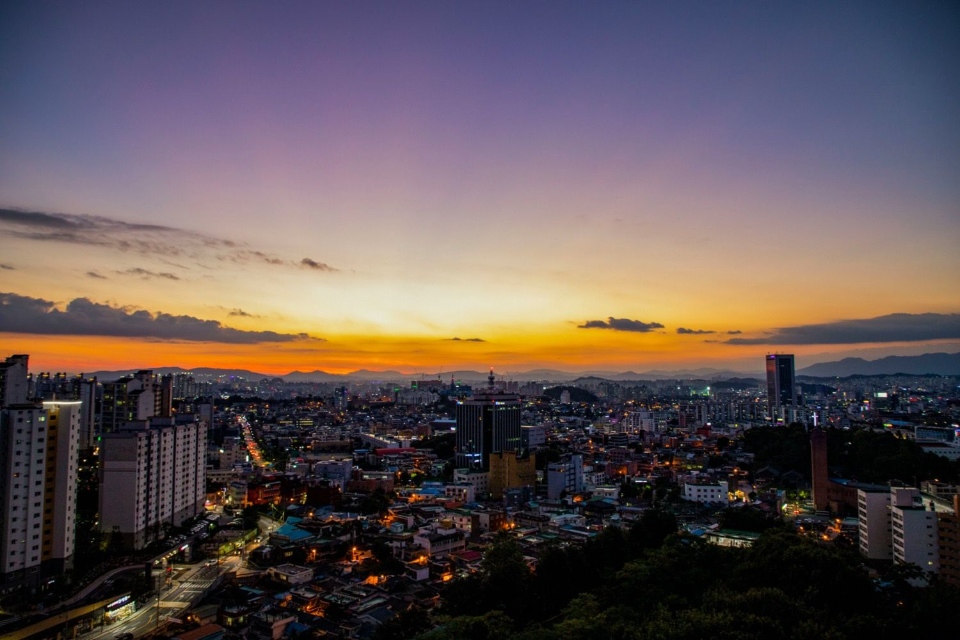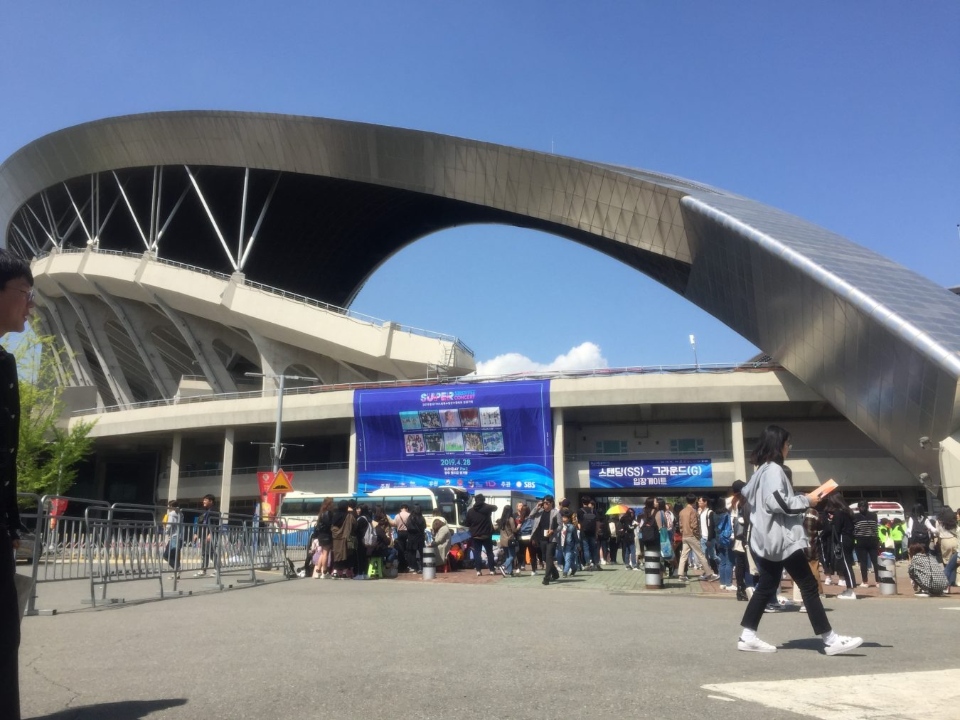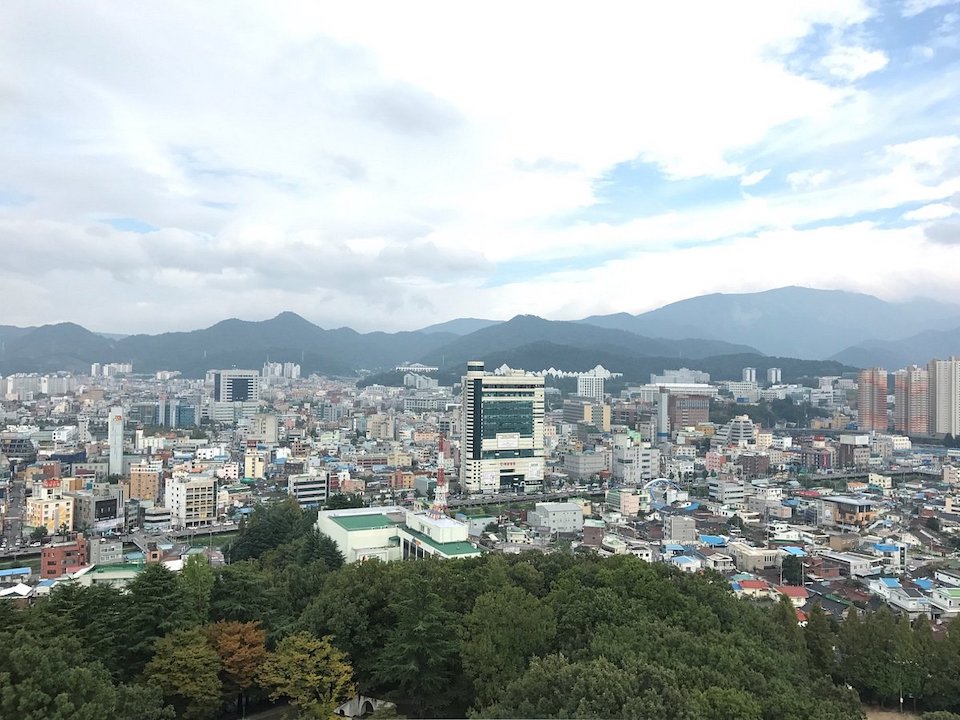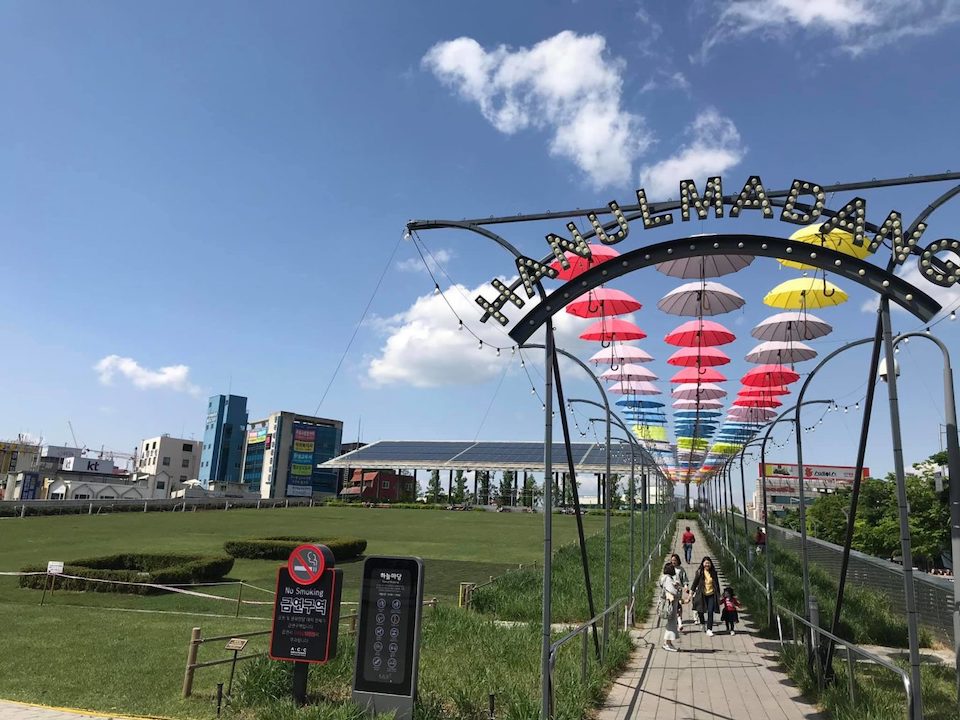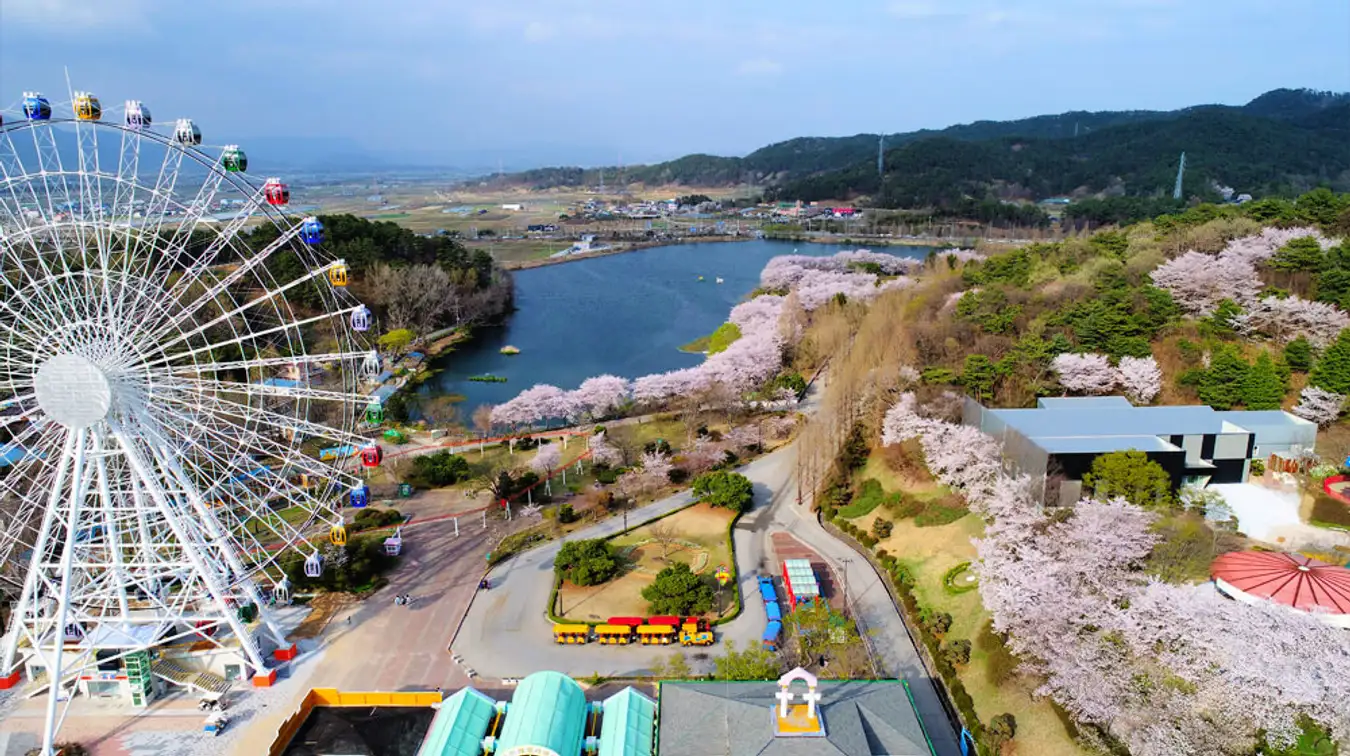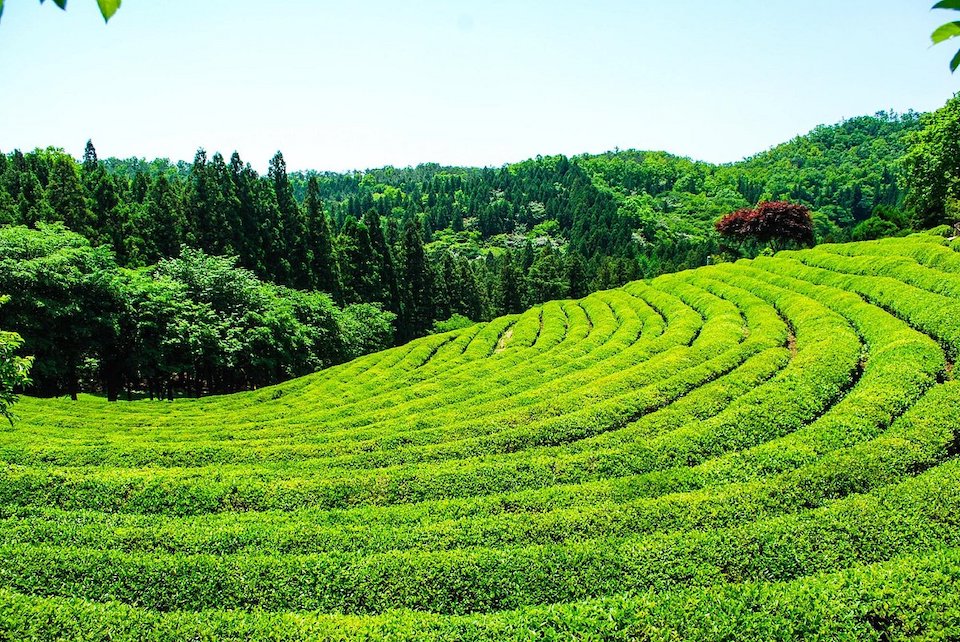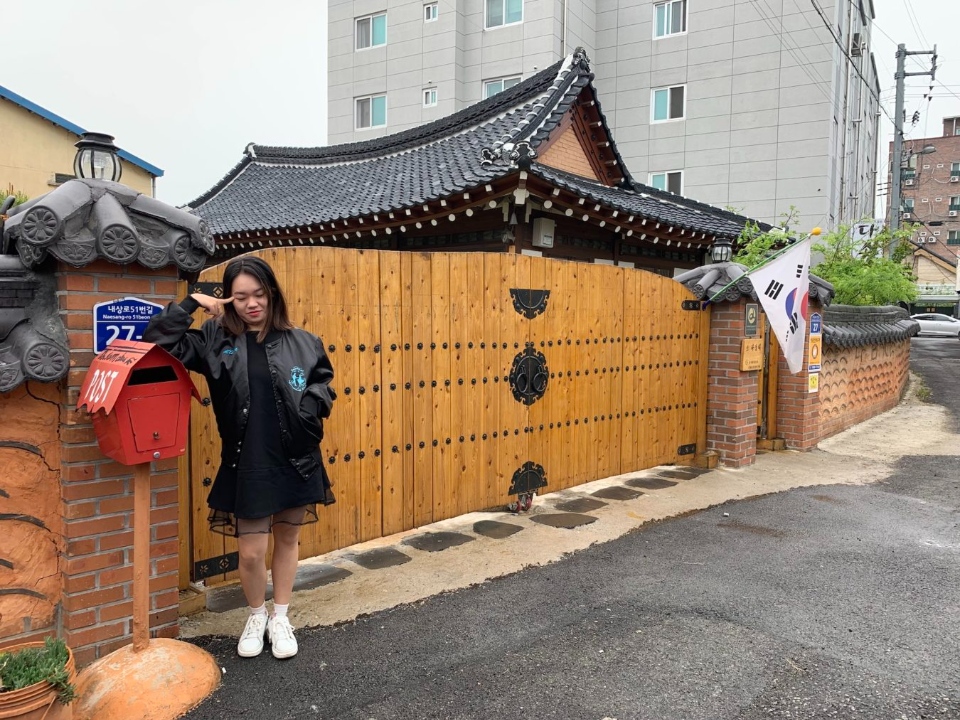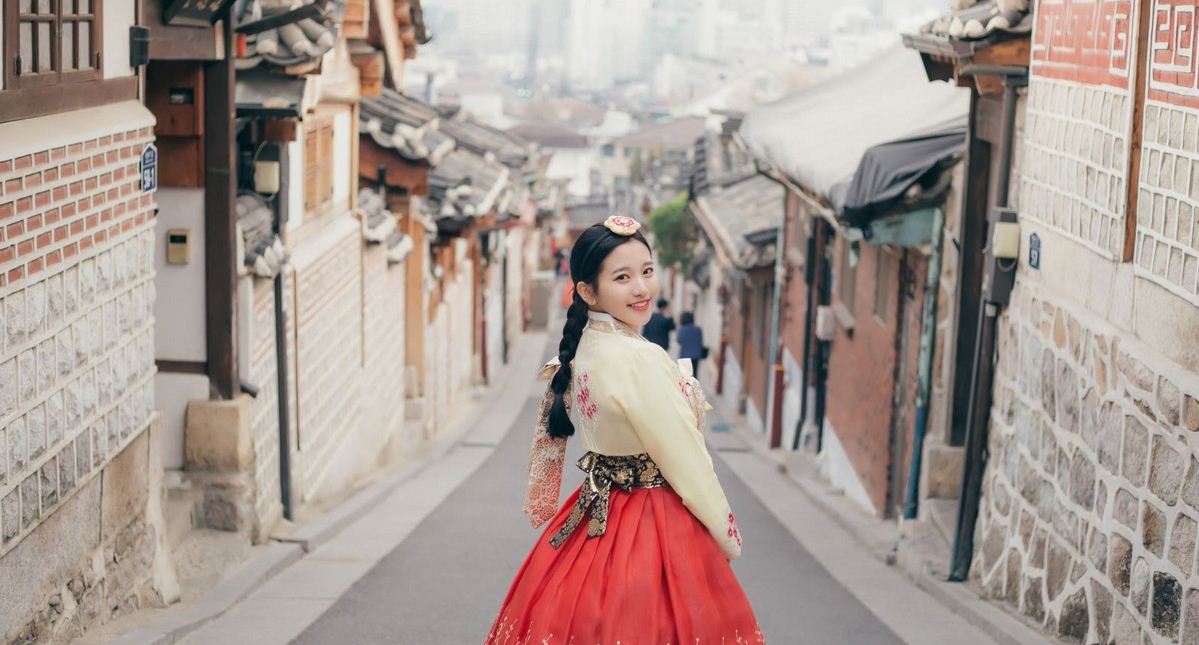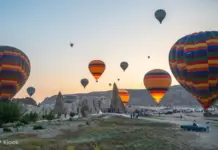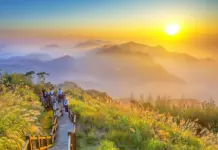If you want to explore Korean culture and enjoy a relaxing time with your family, then Gwangju is the perfect destination for you. Different from the busy, hustle and bustle streets in Seoul, this place is known for its sunny roads and bold artistic and cultural landscapes. Not only that, the culinary culture in this city is also extremely diverse and rich. So, is Gwangju worth visiting, how to visit Gwangju, what to do in Gwangju and how to plan a budget trip to Gwangju for the first-time perfectly? Let’s check out our Gwangju travel blog (Gwangju blog) with the fullest Gwangju travel guide (Gwangju guide) from how to get to Gwangju, best places to visit, best time to come, what to eat as well as top things to do in Gwangju to help you maximize your trip as follows!
- Where to go in Gwangju? — 12+ gwangju attractions & Gwangju places to visit
- Discover Namsangol Hanok village: Preserving the quintessence of Korean culture
- The FULLEST Jeollanam Do travel guide: How to get there, best time to visit, top things to do in Jeollanam Do & MORE
- The ULTIMATE Guide to Gangwon: How to get there, Top attractions & what to do in Gangwon
- 5 days in Korea itinerary: How to spend & what to do in Korea for 5 days perfectly?
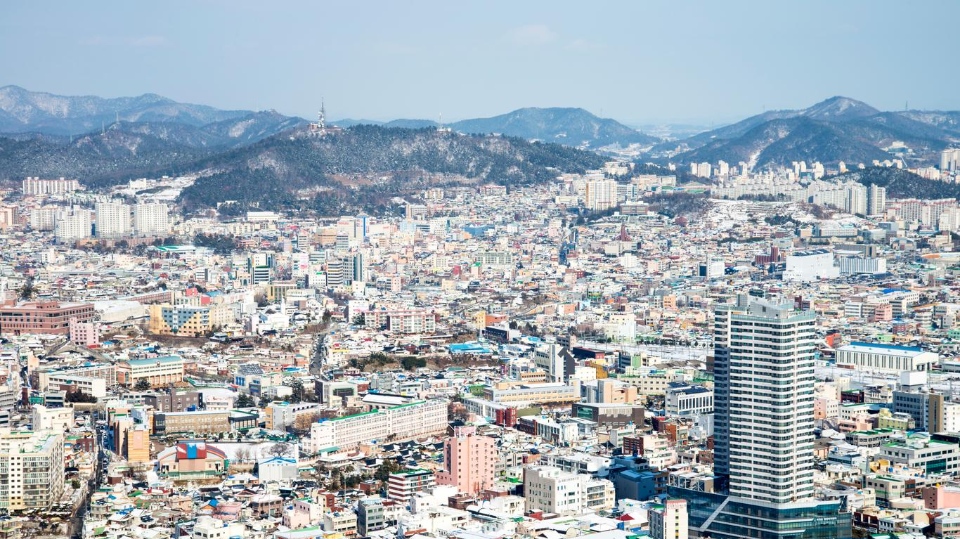
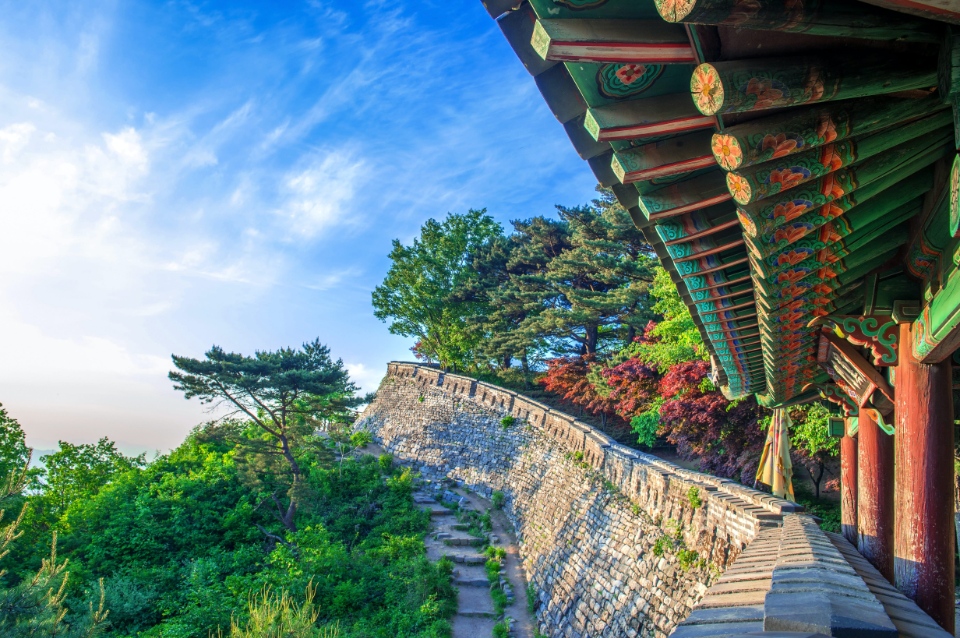
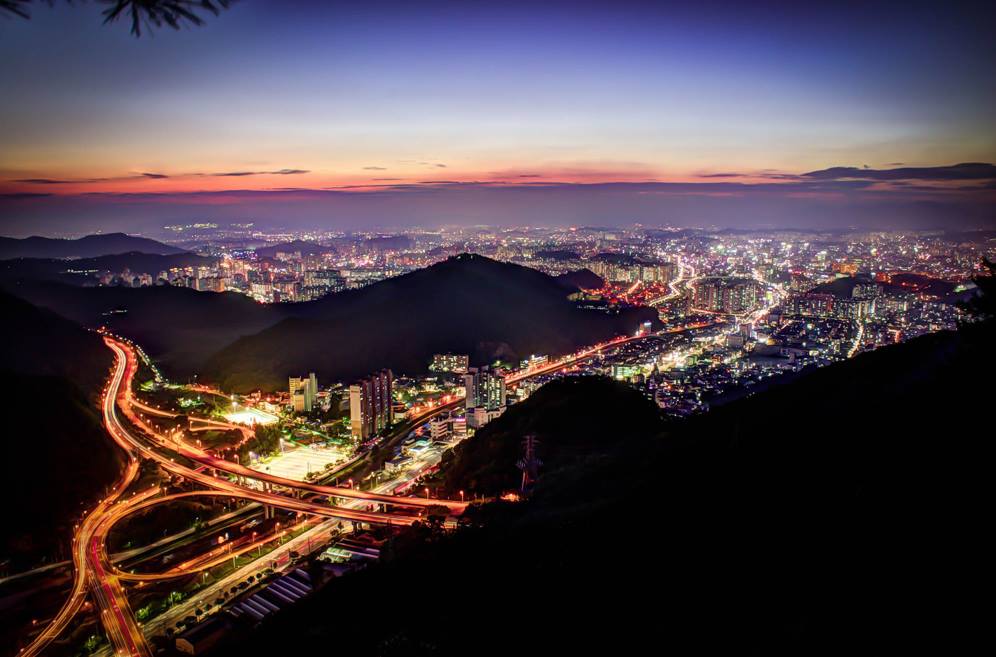
You are bored with the noisy, bustling atmosphere of Seoul, or you simply like the quiet, peaceful atmosphere. Why not take your suitcase to Gwangju – a beautiful and resilient land, not only famous for being the hometown of many ‘National Idols’ like J-Hope (BTS), Yunho (TVXQ), Seungri (BigBang), Suzy… It’s also known for its artistic and cultural landscapes, with excellent culinary paradise such as Tteokgalbi (Korean Short Rib Patties), Boribap Boribap (mixed rice and barley with vegetables)… Go to Gwangju you will definitely be immersed in sweet and romantic atmosphere of a series of cafes, paintings all over the streets, flower beds competing to fill the sidewalks. A city filled with sunshine and warmth, let’s go to Gwangju for a breath of fresh air.
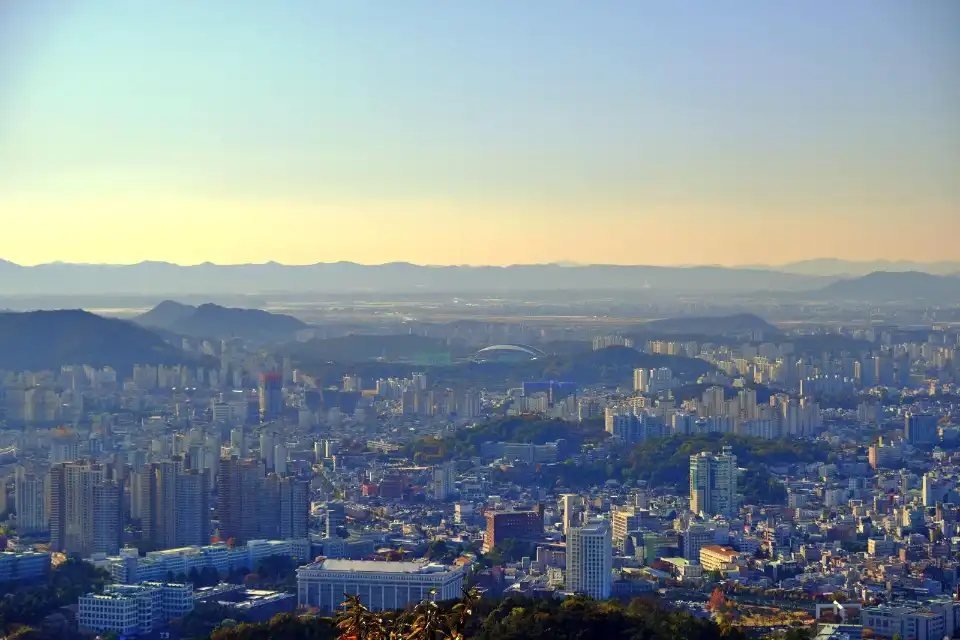
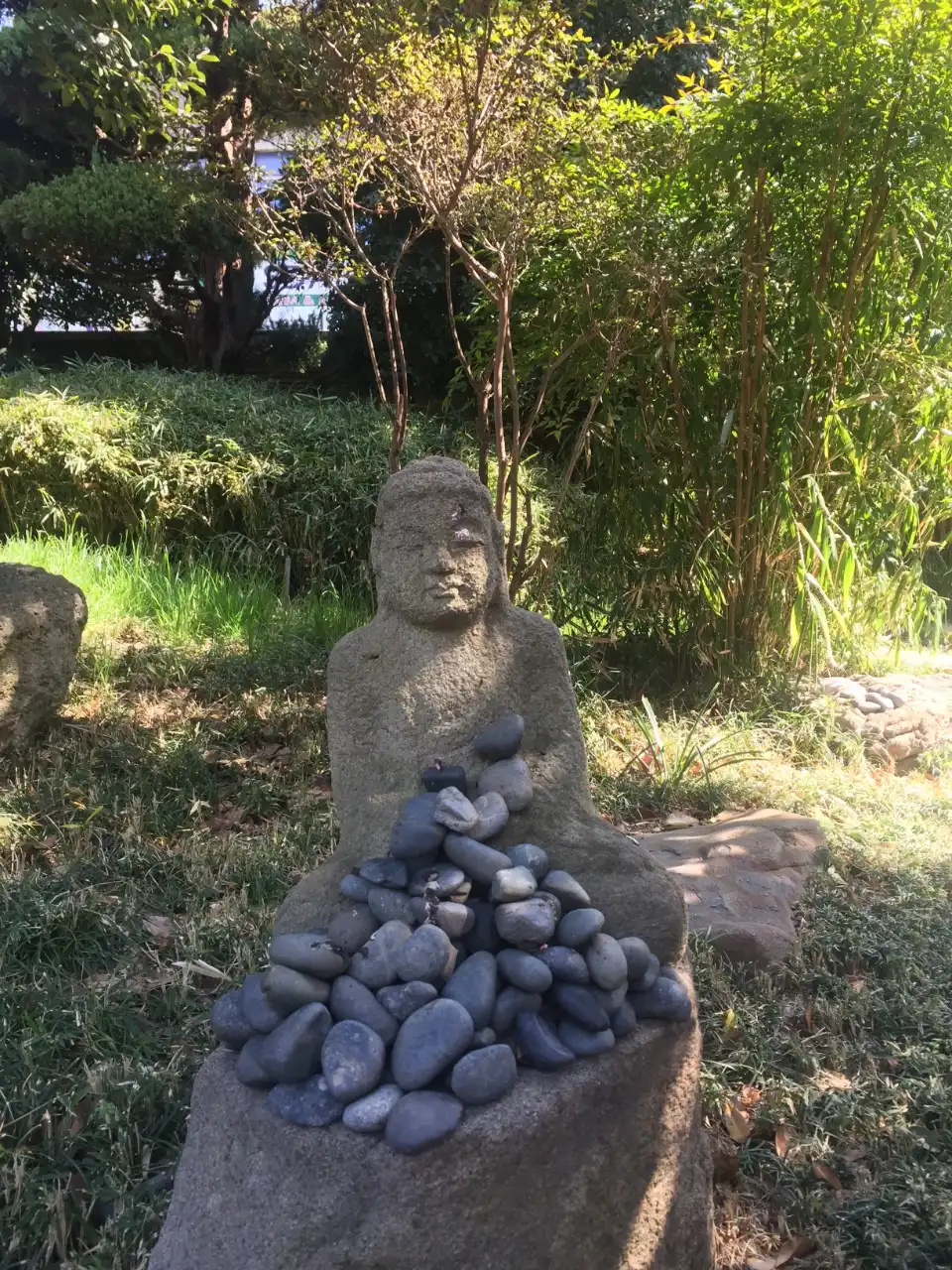
Overview of Gwangju (#gwangju travel blog)
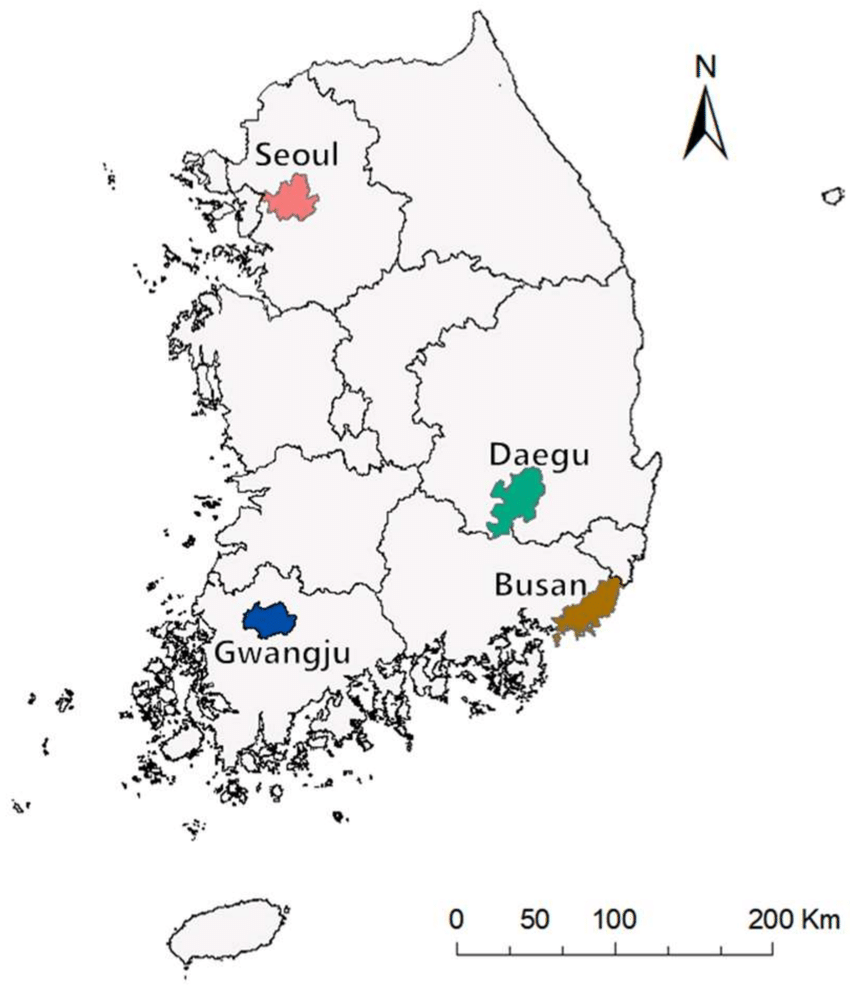
Gwangju city is like a paradise of Korea, where there are many hills and rivers spread all over the city, where there are magical moments of light at every sunrise or sunset. Come to the city of light Gwangju in your Korean travel. Gwangju is the 6th largest city in Korea and the central city, 300km from Seoul and nearly 200km from Busan. Previously, Gwangju was the capital of South Jeolla Province until 2005 when the provincial ministry was moved to Namak, Muan County.

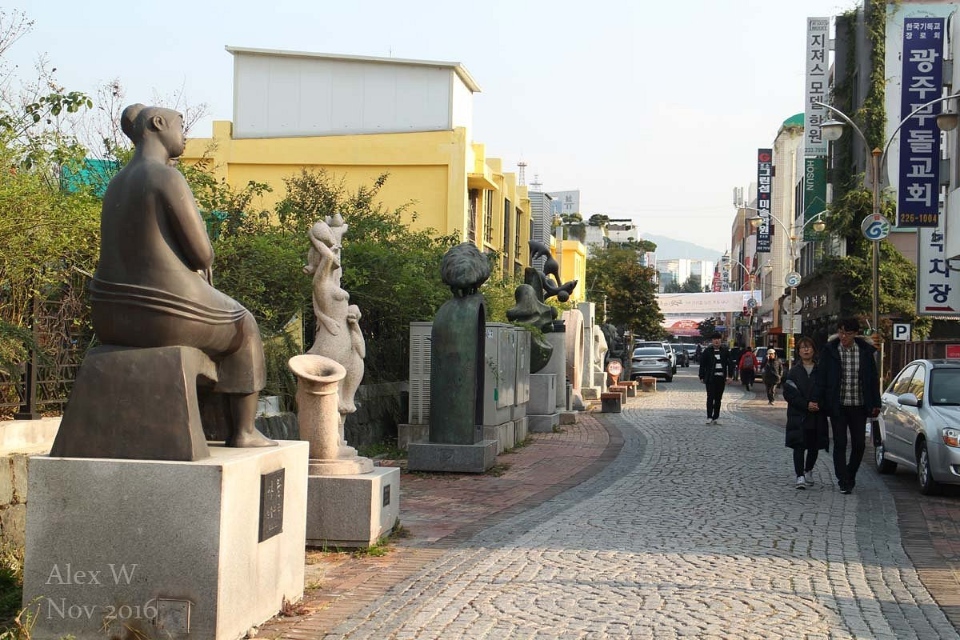
Gwangju is known as the “City of Light”, because the word Gwang in Korean means Light. This name is like the expectation and belief about the southern land of Korea that always shines. Gwangju has many hills and rivers spread throughout the place. Gwangju is like a heaven on earth, with magical moments of light.
The city of Gwangju has a thriving art culture. Even just glancing through the streets of Gwangju, you will notice that the locals have a unique fashion sense. If you had more time to explore the city, you’ll find plenty of art galleries and exhibitions held year-round.
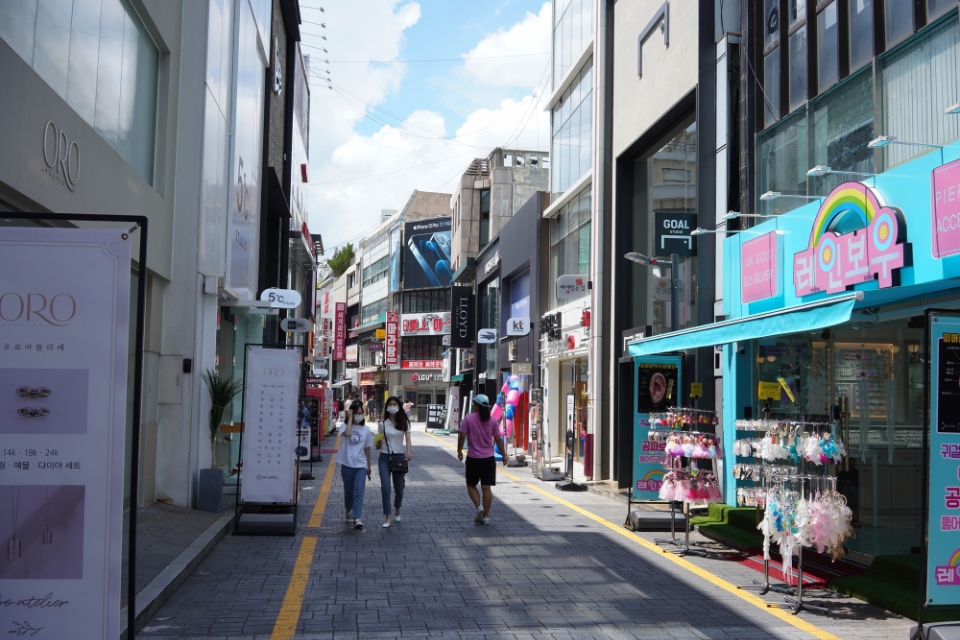
The city of Gwangju is famous for its fresh and cool climate and many beautiful scenes that attract tourists from all over the world. It is a place with many hills and rivers, so once you come here, don’t miss the time to catch the sunrise and watch the sunset. It will be a pity if you have come to Gwangju and not enjoy two of the best moments, two of the most beautiful moments, leaving the most indescribable emotions here.
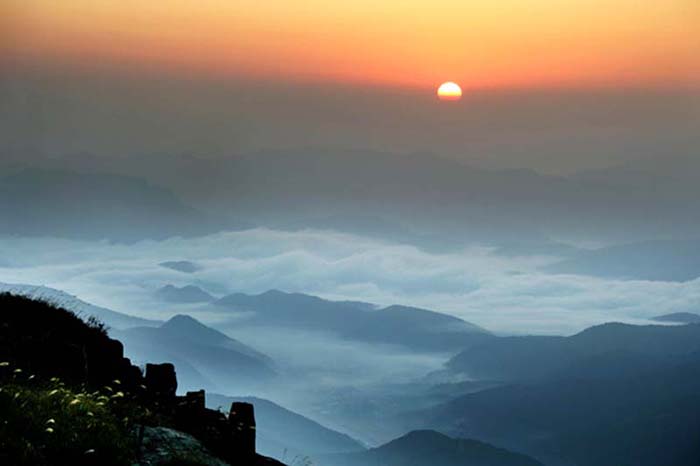
This city is also well-known for its largest and most modern bus station in Korea. Besides, the entertainment areas and culinary culture space here are also loved by many tourists. Compared to other developed cities in Korea such as Seoul or Busan, this locality has a completely different appearance with much cleaner and more open streets.
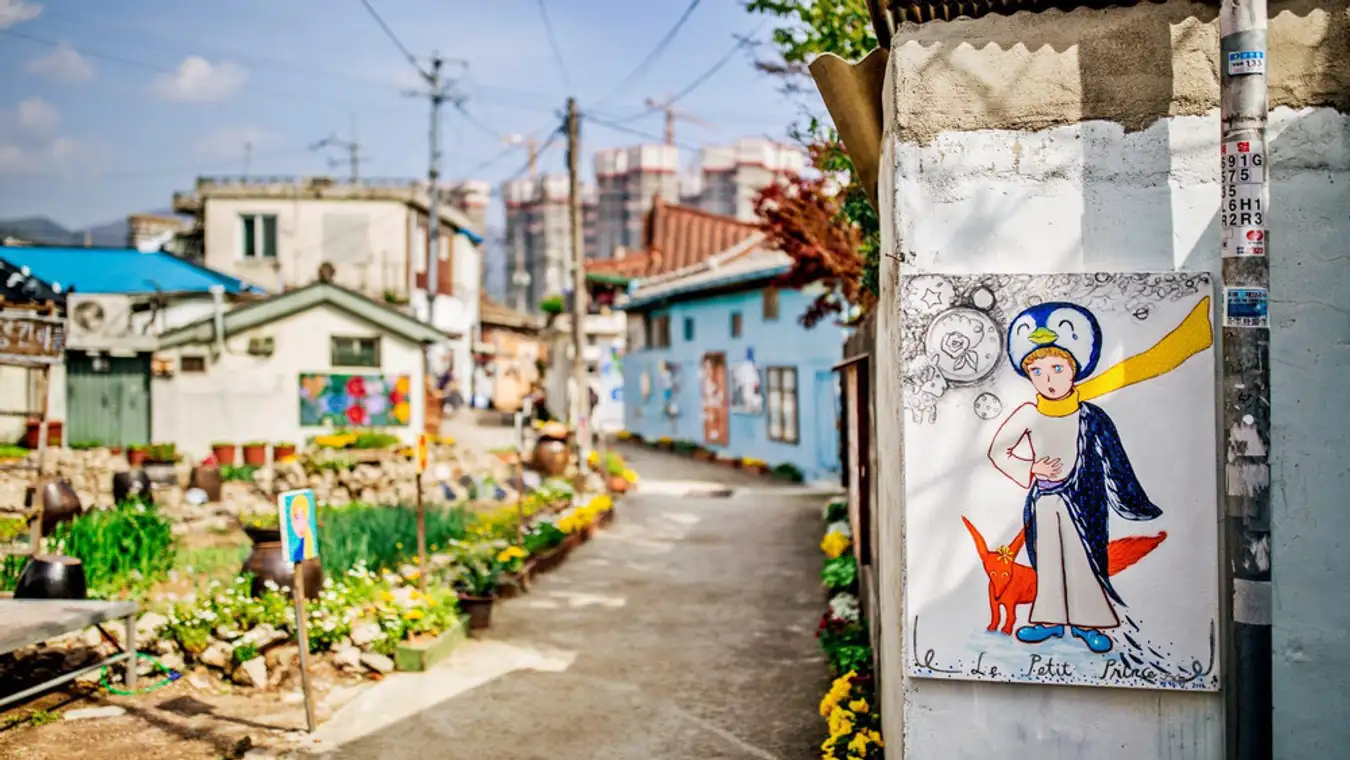
Gwangju is also known as “Korea’s basket of bread”. In fact, the food here is fresh and affordable compared to other places. Especially, if you come to Gwangju, you definitely have to taste Tteokgalbi as mentioned above – a specialty of this region.
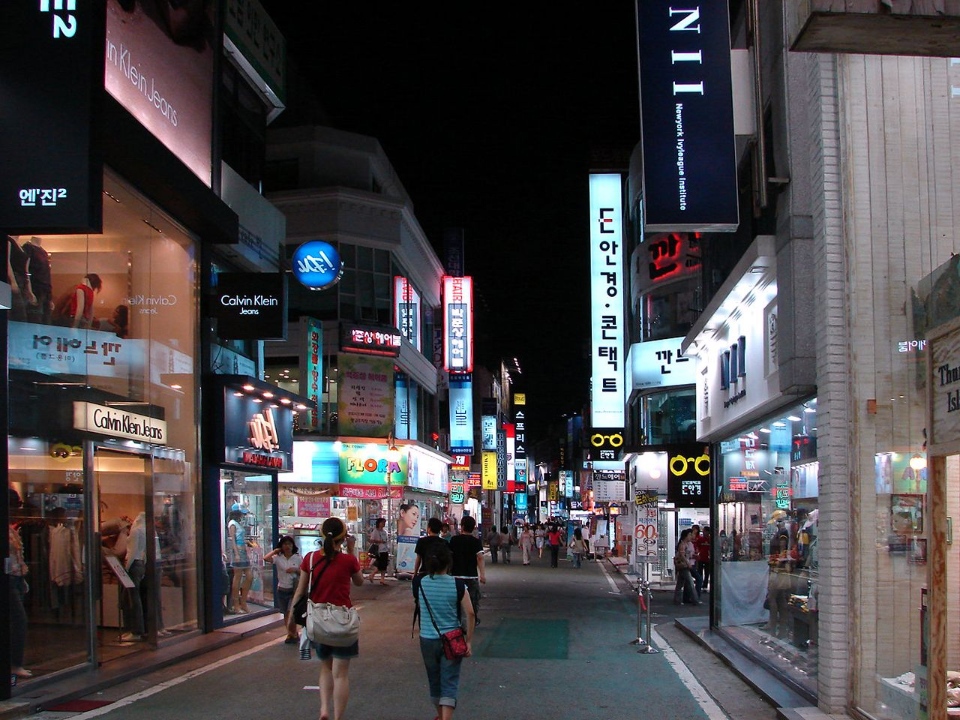
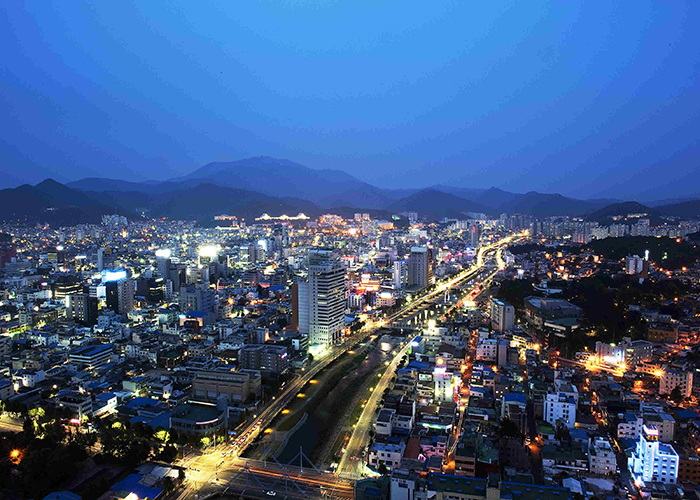
When to come? (#gwangju blog)
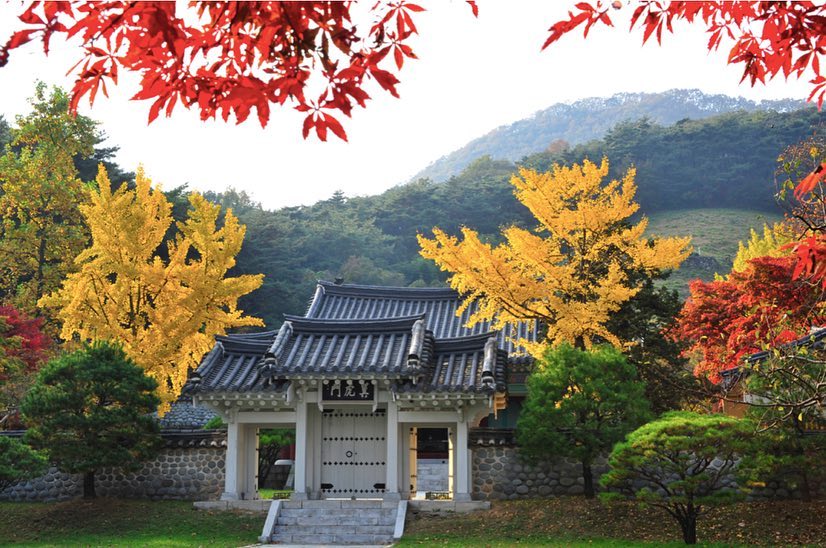
For the most complete journey, you should visit the city of Gwangju at the right times. According to Gwangju travel blog, the early autumn months are the most ideal time to visit this city because the weather is extremely mild and pleasant. In addition, you can walk on the path covered with falling yellow leaves and enjoy romantic moments with the one you love.
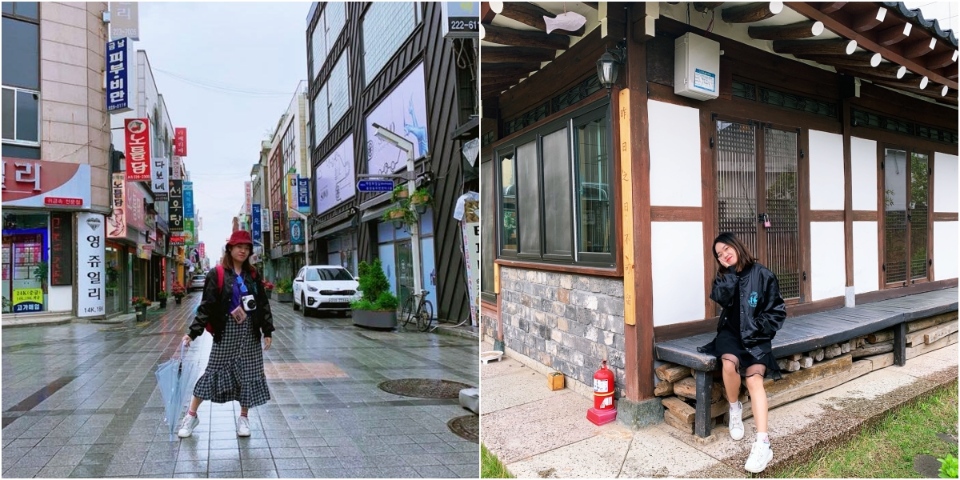
Besides, you can also visit Gwangju around March to May every year. At this time, the weather is extremely warm, favorable for outdoor activities. In particular, this is also the time when many traditional Korean festivals are held to welcome the new year. However, if you want to watch snowfall or experience snow games, you should come here in winter.

How to get to Gwangju? (#gwangju travel guide)
There are currently no airlines operating direct flights from Vietnam to Gwangju. According to Gwangju travel guide, you will have to fly to Busan, Incheon or Jeju airports. After that, continue getting to Gwangju by plane, train or car. You can refer to the detailed means of transport in the section below.
By plane (#gwangju travel blog)
Getting from Vietnam to South Korea
To get to Korea, you can depart from 1 of 4 airports, which are Noi Bai International Airport (Hanoi), Tan Son Nhat International Airport (Ho Chi Minh City), International Airport Da Nang or Cam Ranh International Airport (Nha Trang). These flights will land at Incheon Airport (Seoul) and Gimhae Airport (Busan). From these two airports, you can easily travel to Gwangju city. To save money as much as possible, you should book your flight ticket about 1-2 months in advance.
Domestic airlines operating direct flights from Vietnam to South Korea are Vietnam Airlines, Bamboo Airways and Vietjet Air. In addition, you can refer to international airlines also operating this route, such as Korean Air, Asiana Airlines, Thai Airways, Malaysia Airlines…
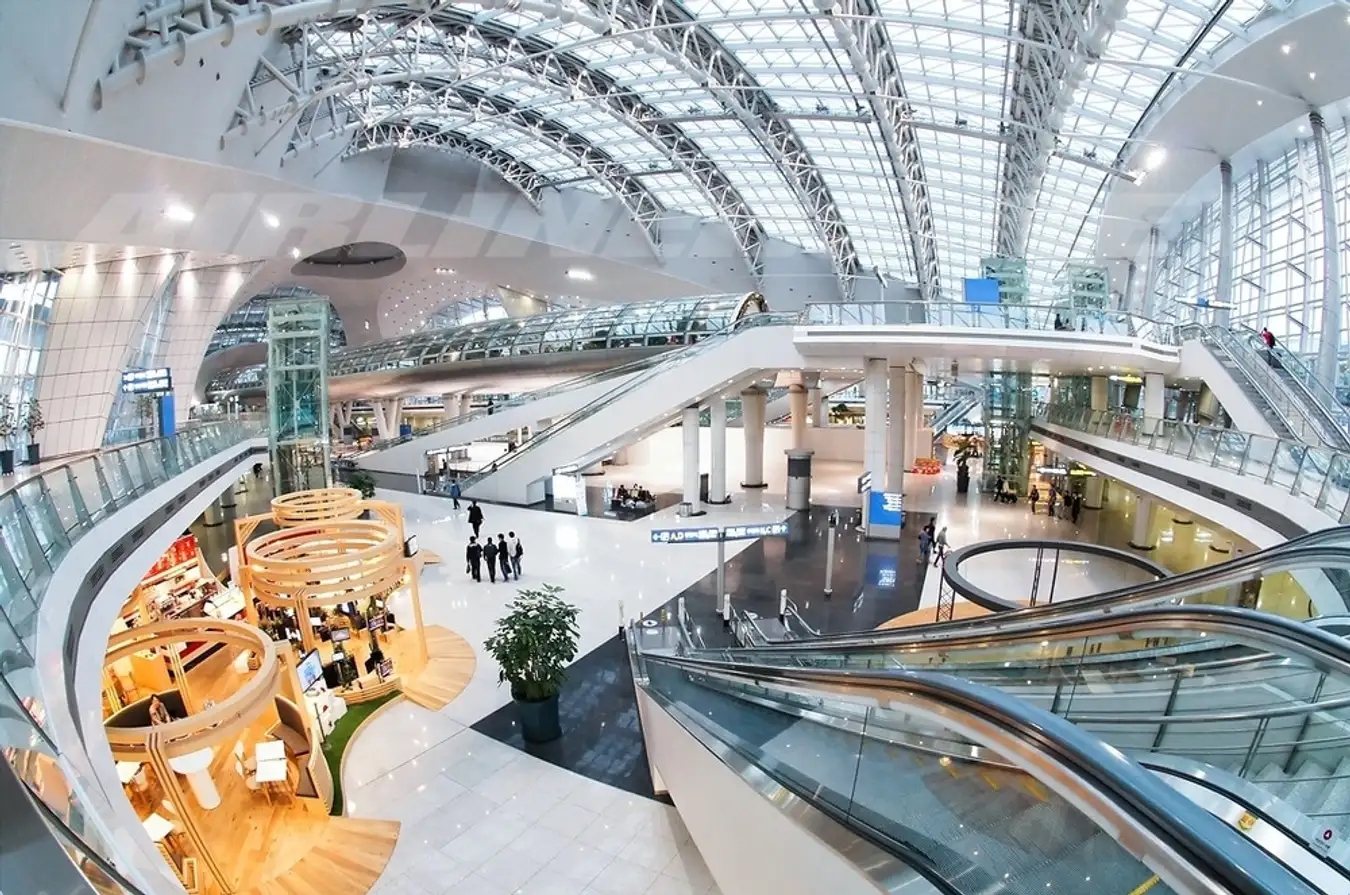
Flight time from Vietnam to Seoul is about 3 hours 45 minutes if departing from Hanoi and 4 hours 55 minutes from Ho Chi Minh City. For connecting flights with 1 stopover, the flight time can be up to 6-11 hours.
To find cheap tickets as well as best routes, you can go to Google Flights, Kayak or Skyscanner. You should note that depending on the airline, direct route or one transit route and seat class, the ticket price will have a significant difference.
From other cities (#gwangju blog)
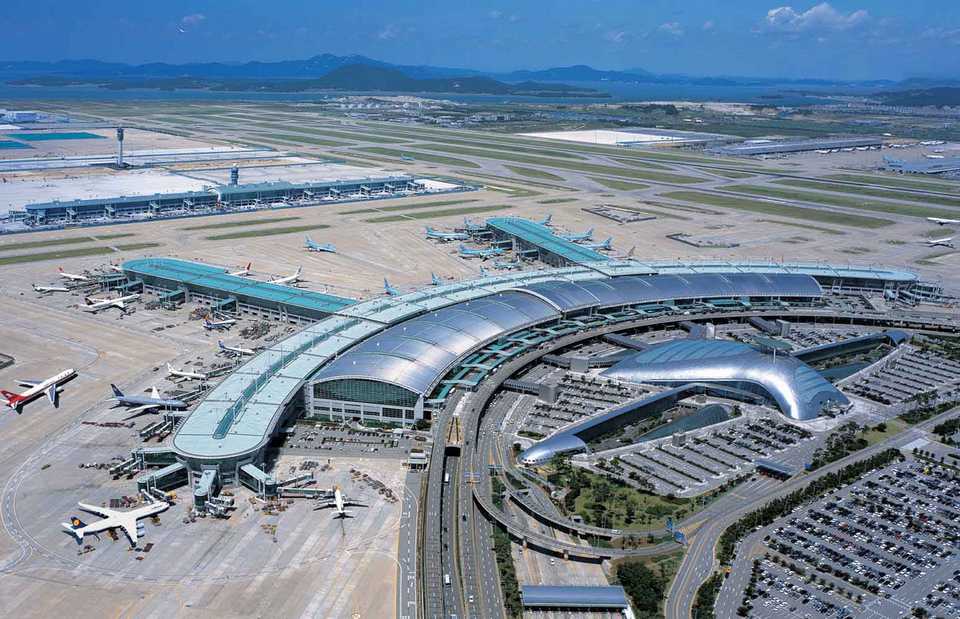
From Incheon International Airport, Gimhae Airport and Jeju Airport all have direct flights to Gwangju Airport. There will be daily 1-2 flights departing from Incheon to Gwangju at a cost of about 29,600 won. However, traveling from Gimhae airport will be a bit more difficult. Therefore, in addition to finding air tickets, you also need to book flight tickets to Gwangju in advance.
By train from Seoul
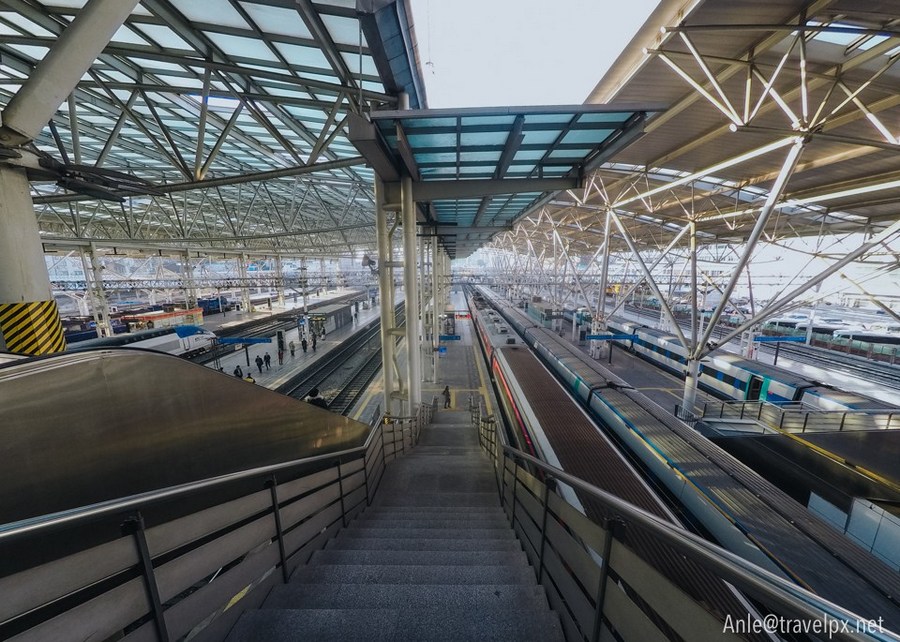
The distance to Gwangju is about 300km from Seoul and more than 200km from Busan, it sounds very far, but you are traveling Korea which is one of the countries with a very modern transportation system in the world, public transport infrastructure is also very develope. So you can travel by plane, subway, bus, etc. to get to Gwangju.
There are many ways to go to Gwangju, but the most convenient and easiest way to travel is by KTX, the train goes very fast, always on time, clean, and extremely smooth for those who have a fear of motion sickness.
You can buy KTX tickets right at the KTX station in Seoul station or Yongsan station or faster by ordering now Korail Pass with flexible 2-day service package here. You then have a ticket to use the KTX for the round trip from Seoul to Gwangju very quickly.
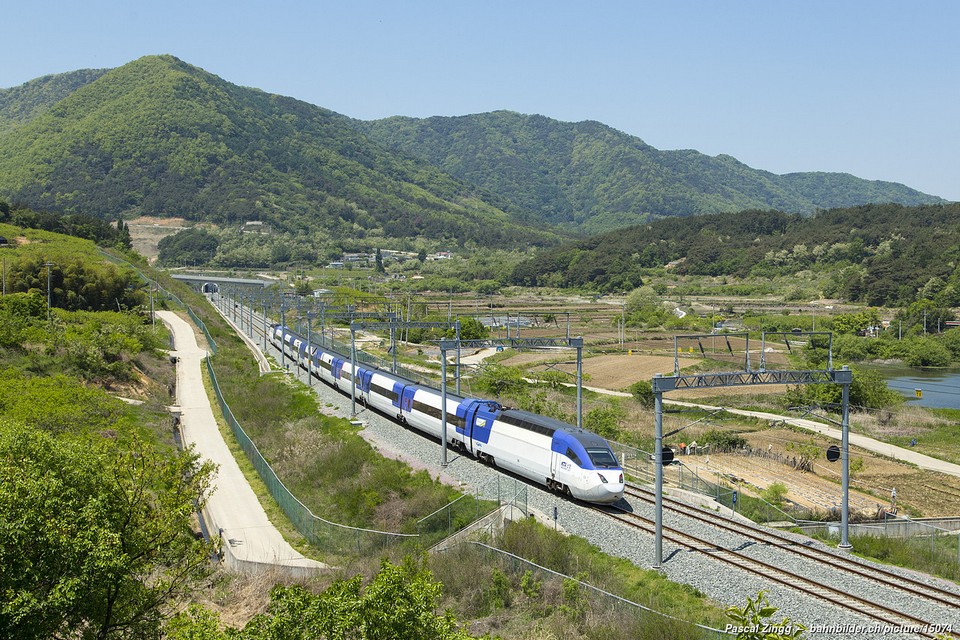
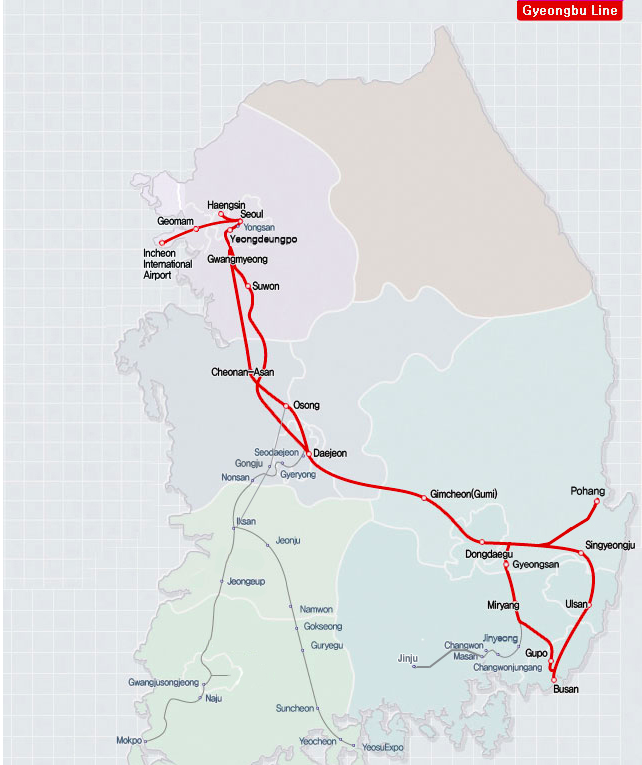
Korea Rail Pass (2, 3, 4, or 5 Days)
Currently, there are Korail and KTX trains running from Seoul to Gwangju in about 2 hours at a cost of 46,800 – 47,100 won. It should be noted that all KTX trains to Gwangju depart from Yongsan Station in Seoul to Gwangju-Songjeong Station.
Due to using Sim Card to transmit 3G/4G is quite drain battery, so I switched to renting a Wifi transmitter for convenience, being able to use multiple devices at the same time. Every time I go, I always rent from Klook because I often have discount vouchers, just register with an email to be able to earn discount vouchers on Klook and go to the counter at Incheon Airport to pick it up, easy to use for someone who is ‘low’ tech-savvy like me.
Note: And don’t forget to download Navermap to look up the way in case you don’t find directions to go: Navermap: just type the address you want to go to, the app will give very specific instructions for traveling by taxi, bus, subway is like Googlemap. Navermap is like an alternative app to googlemap when you in Korea.
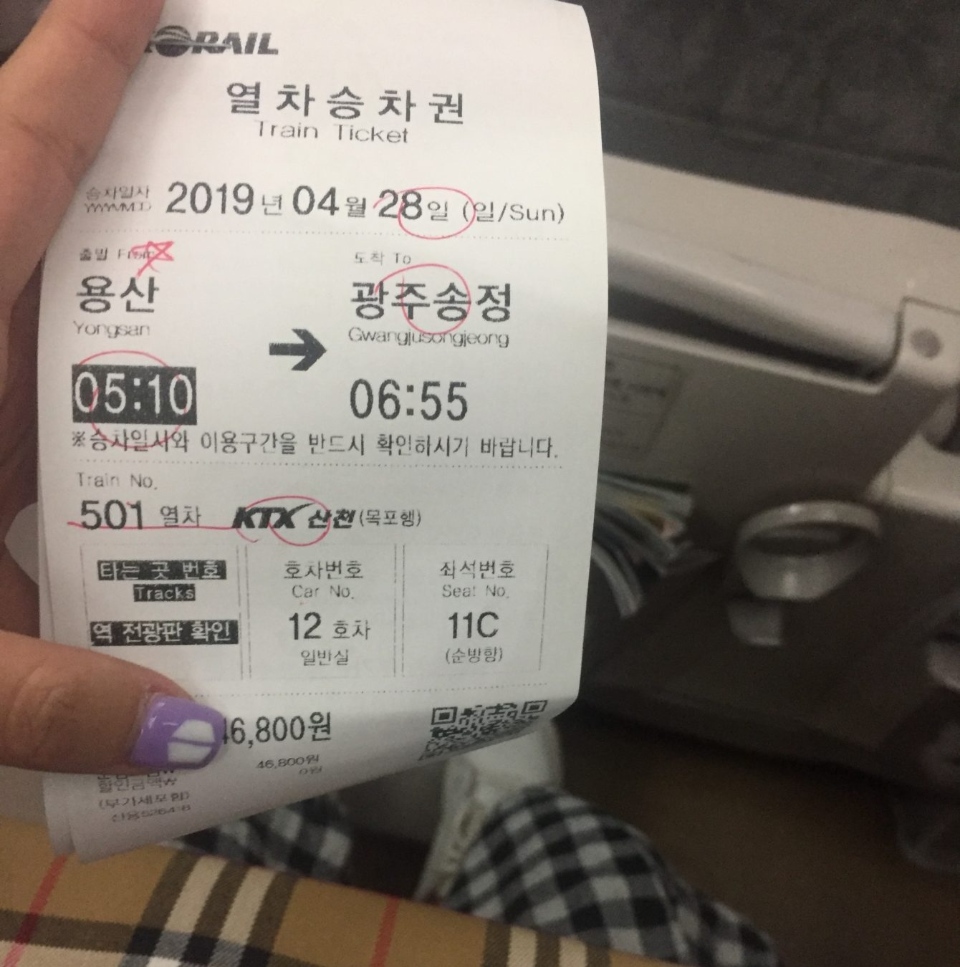
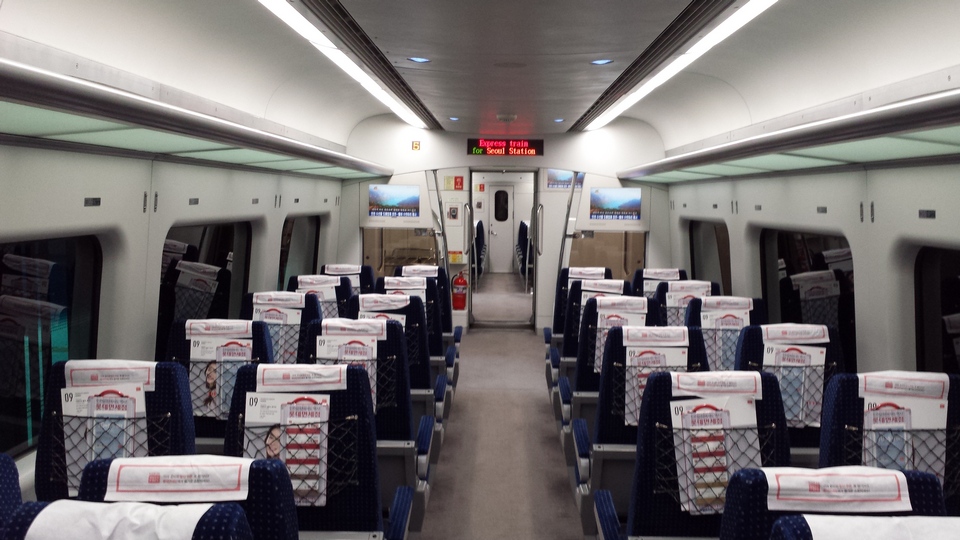
By bus (#gwangju travel guide)
There are many buses from major cities throughout the country to Gwangju. Bus fares from East Seoul Bus Terminal (Dong Seoul Terminal) to Gwangju are 19,000 won and 28,200 won for the standard bus and limousine, respectively. It will only take you about 3 and a half hours to travel if the traffic is not congested.
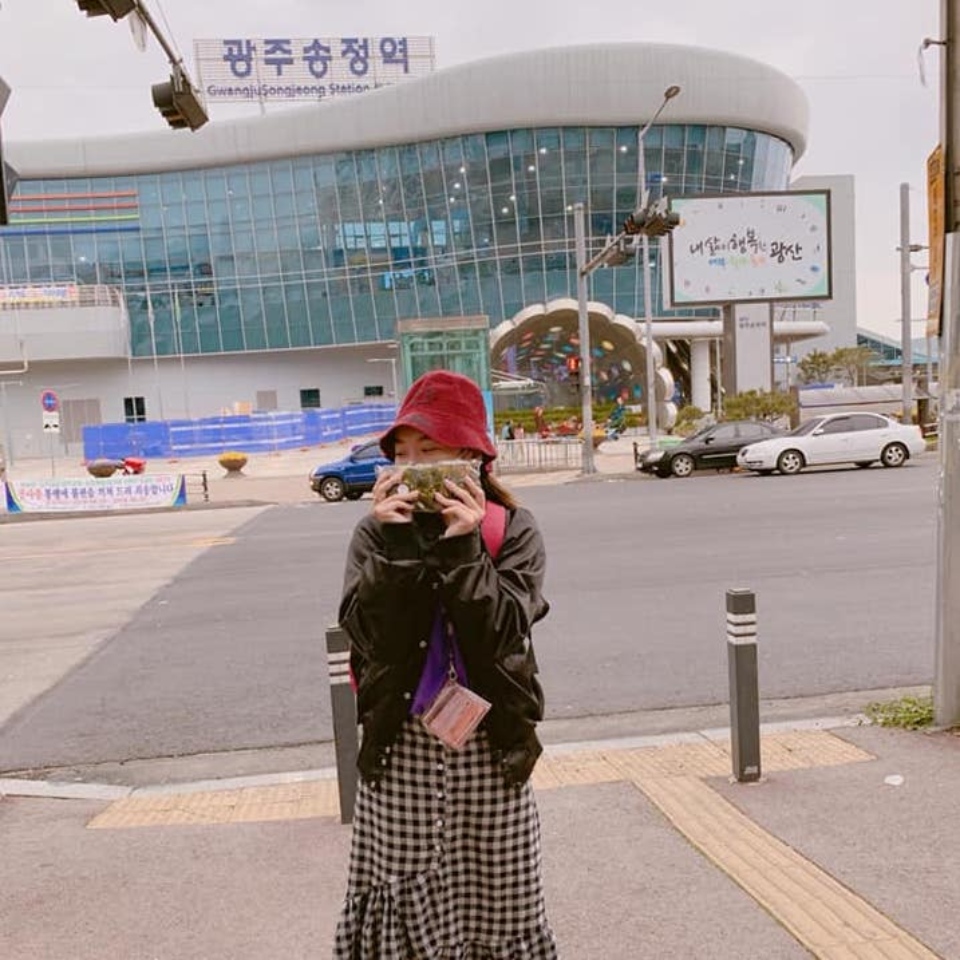
Where to go and what to do in Gwangju (#gwangju guide)
Gwangju Art Street (#gwangju guide)
Address: 62-3 Chungjang-dong, Dong-gu, Gwangju, South Korea
How to get there: Geumnamno 4-ga Station, Exit 4.
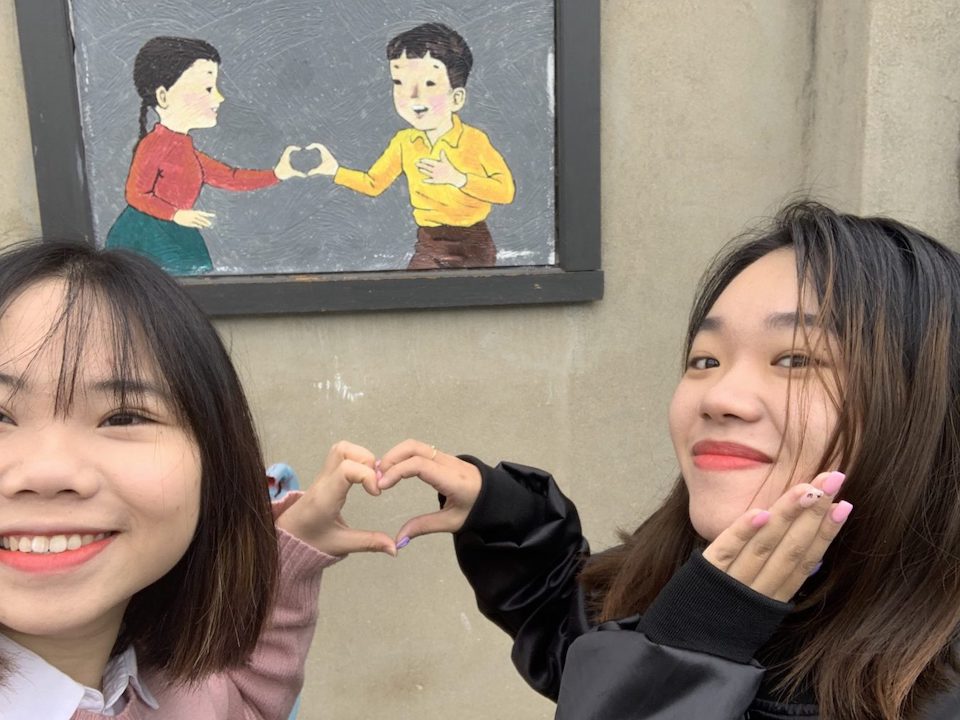
The Gwangju Art Street is for those who want to enjoy the unique arts and traditions of Gwangju. This area attracts many visitors to enjoy art. Especially at 3pm every Friday, the street will take place an extremely exciting art activity called ‘Butterfly’ with traditional dance performances, or traditional pottery display, performances usually free or very cheap.
To get to Gung-dong, it’s only a 10-minute walk from Chungjang-ro.
This street is located near the city center with art galleries and uniquely decorated shops. Gwangju Art Street is about 3 blocks long and is a place to keep the unique traditions of Gwangju. Especially in the evening, the street becomes more bustling and shimmering under the lights.
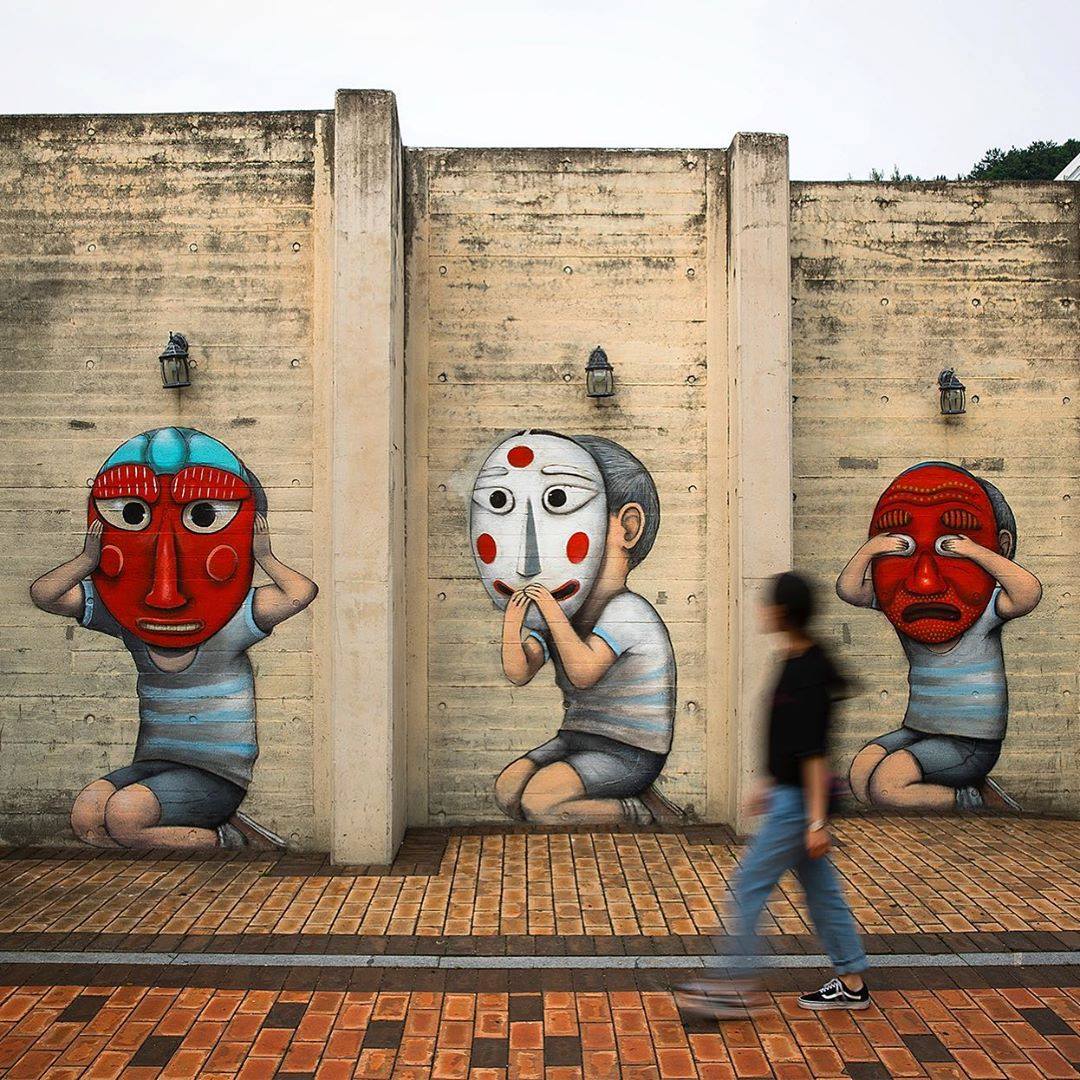
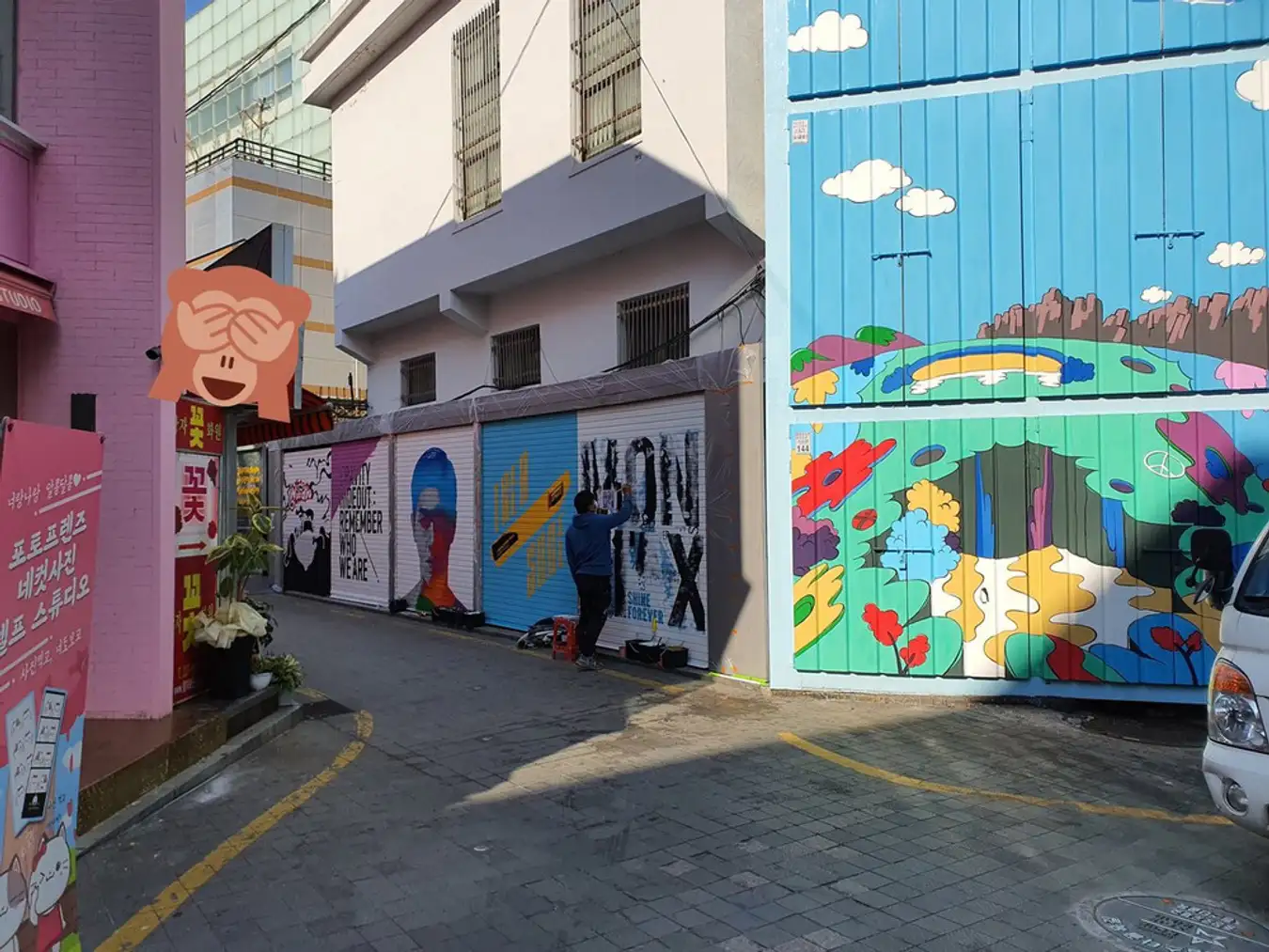
Gwangju National Museum
Address: 110 Haseo-ro, Buk-gu, Gwangju, South Korea
Hours: 10 AM–6 PM
Gwangju National Museum is a place to store and display information about local history and culture. When you come here, you can see calligraphy, paintings and artefacts from the Joseon period.
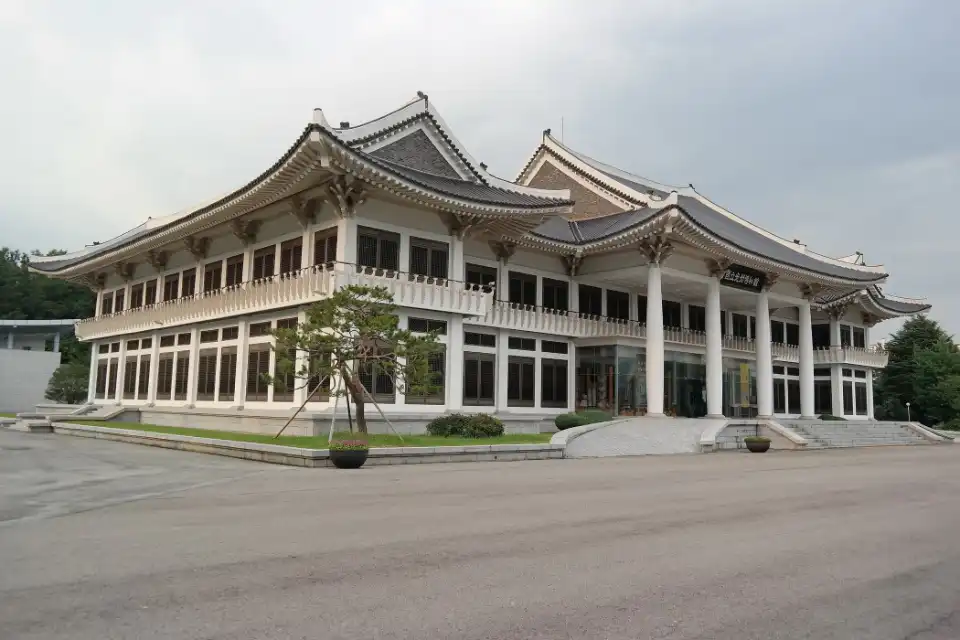
The museum has traditional Korean architecture with 2 floors displaying artifacts. On the 1st floor there are 4 exhibition and the 2nd floor has 5 galleries. In particular, on this floor there is a gallery of Chinese ceramics recovered in a shipwreck from the 14th century. Visitors will not lose entrance tickets and any other surcharges.
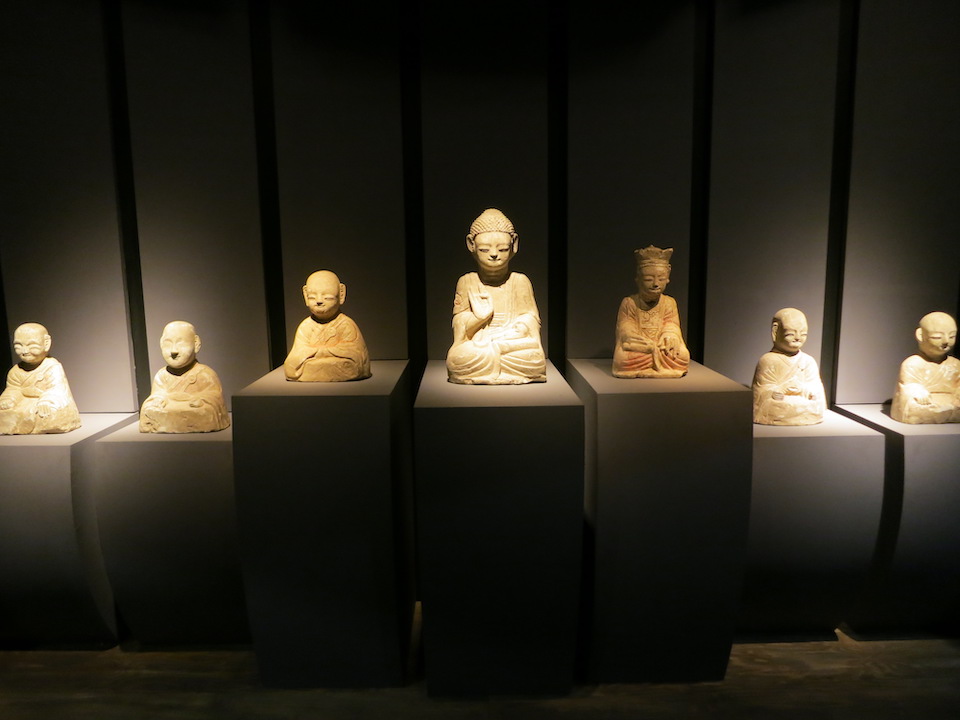
Chungjang-ro Street
Chungjang-ro is the busiest street, the busiest place when going to Gwangju, known as the Myeong-dong of Gwangju.
Address: 1-1 Geumnamno 5-ga, Dong-gu, Gwangju.
How to get there: Culture Complex Station, exit 3.

This place gathers all fashion and beauty stores and restaurants close together to form an attractive shopping complex. The main streets are associated with brands and attract high fashionistas, while in the smaller roads and alleys are cafes and smaller shops with an extremely warm atmosphere nearby. close, yet very unique.
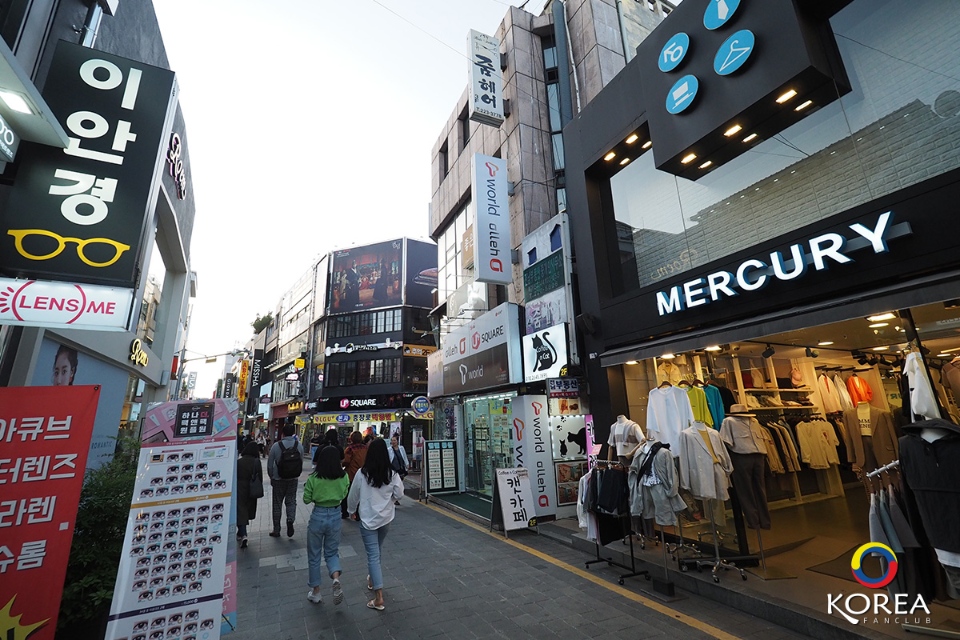
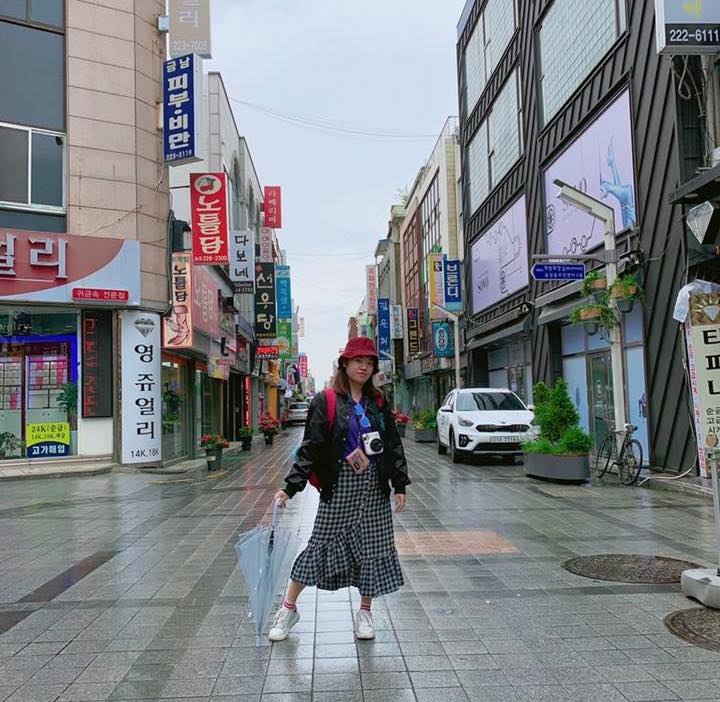
From Chungjang-ro 1(il) to 3(sam) is the gathering place of big brands, and from Chungjang-ro 4(sa) to 5(oh) are mostly Hanbok (traditional Korean clothing) shops. country) you can come to choose and buy yourself a beautiful Hanbok – and the sewing skills of the Gwangju people are very skilled, you will love it.
Gwangju Kimchi Town
Address: 60 Kimchi-ro, Nam-gu, Gwangju
How to get there: Songjeong Station, Exit 1
Opening hours: 9AM-6PM
Admission price: Free entrance to the museum/ 10,000 won for Kimchi Making Experience
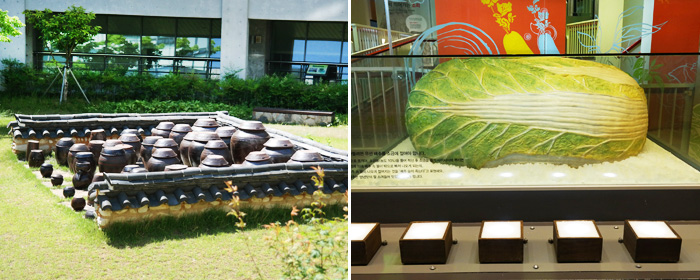
It is the site of the annual Kimchi festival in Gwangju city. Gwangju is a place with rich and abundant natural environment famous for its food with fresh flavors from nature.
For Koreans, Kimchi is like an indispensable treasure food in most meals, even eating noodles must also come with Kimchi, almost every home always has a few bowls of Kimchi ready in the refrigerator. If you want to learn the history of Kimchi, you must definitely visit Gwangju Kimchi Town. Here you can visit the Kimchi museum and participate in many interesting activities such as making Kimchi directly and can take home to enjoy the results of the lesson.
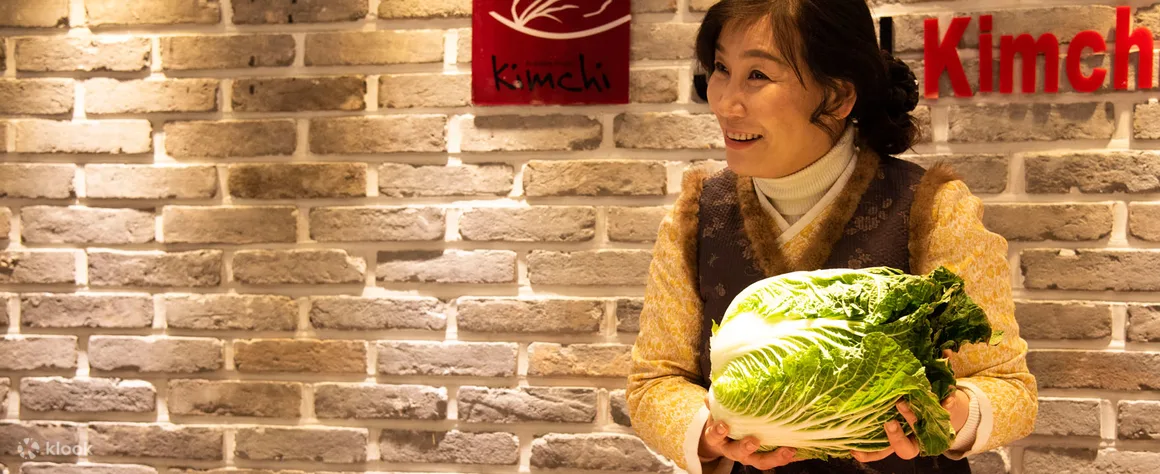
A class only accepts at least 10 students and the instructors are very friendly and enthusiastic, if you simply want to register to experience some traditional Korean activities, you can refer to here.
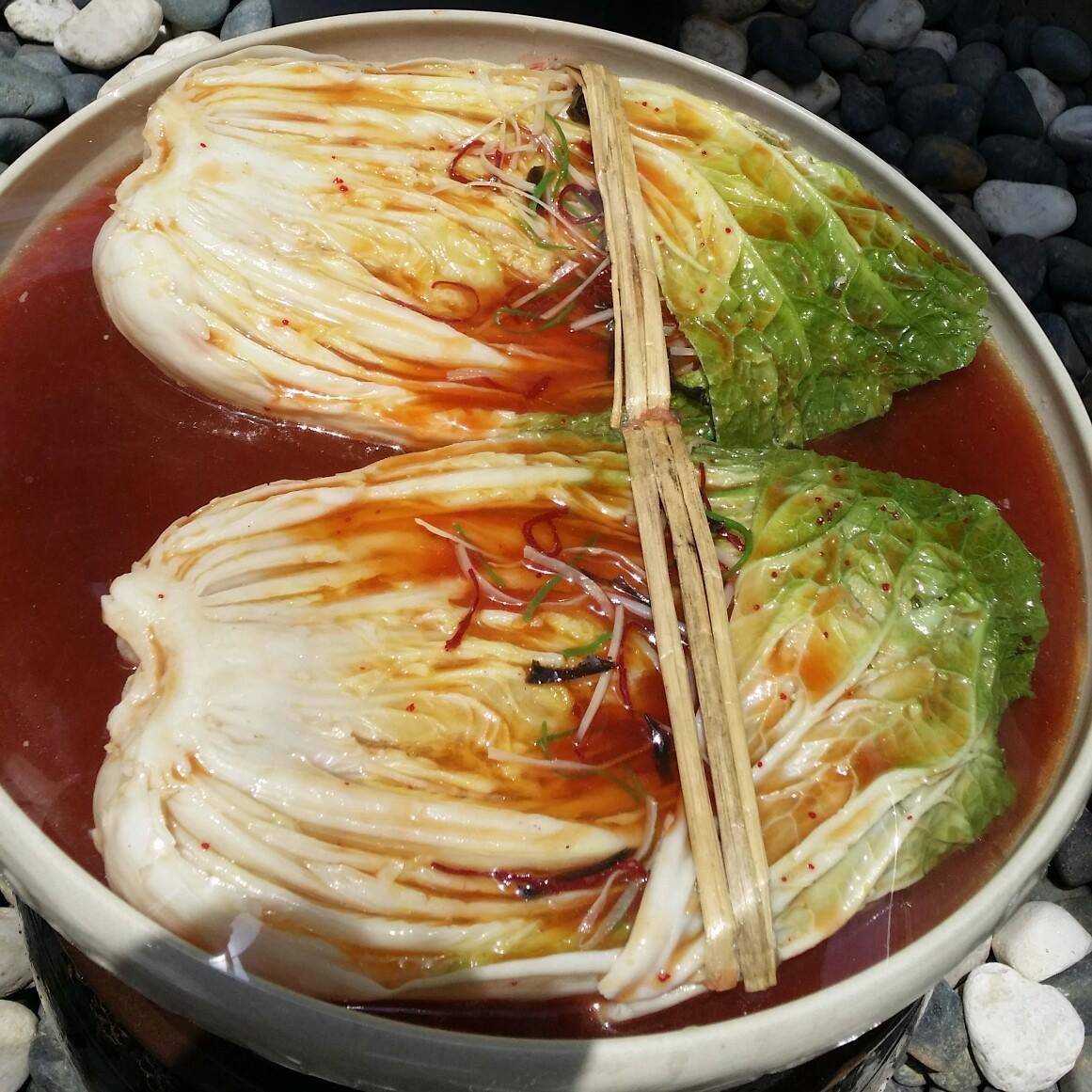
Korea has many Kim Chi festivals, but the most famous is the annual Kim Chi festival that takes place in Gwangju city.
Gwangju World Cup Stadium
Address: 240 Geumhwa-ro, Seo-gu, Gwangju
How to get there: Ssangchon Station
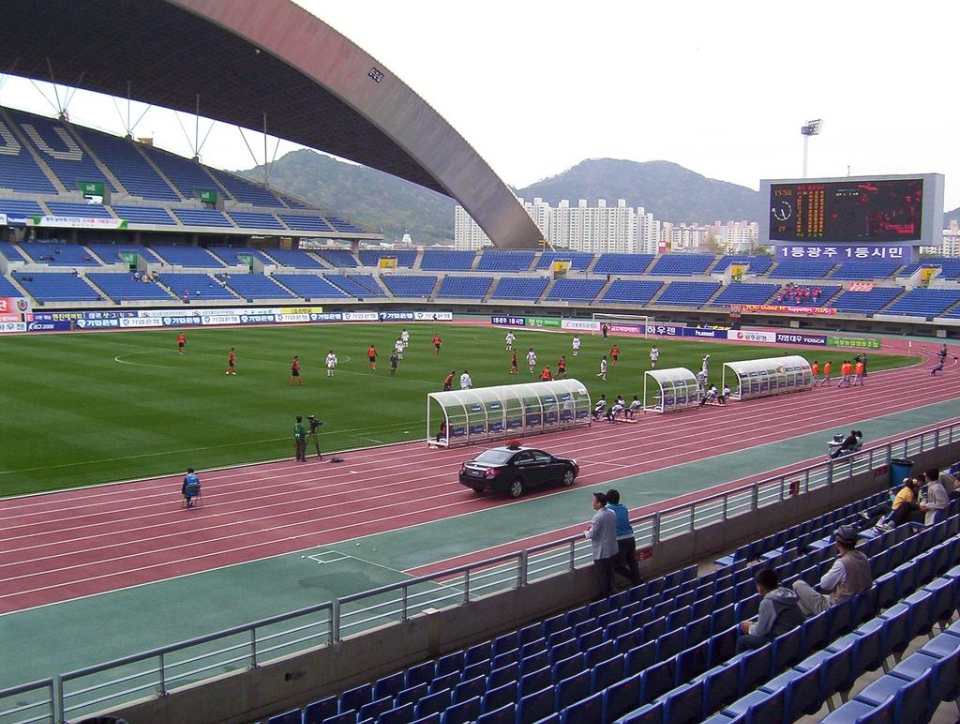
This stadium is also known as Gwangju Worldcup Stadium – the venue has been selected to host several World Cup matches, with a capacity of more than 40,000 people and in April 2019, there was also a big concert held here GWANGJU SBS SUPER CONCERT with the participation of many famous groups such as BTS, IZ’ONE, N.FLYING, NATURE, MOMOLAND, TXT, etc aim to attract visitors to Gwangju to immerses in nature as well as the friendly and simple people in Gwangju.
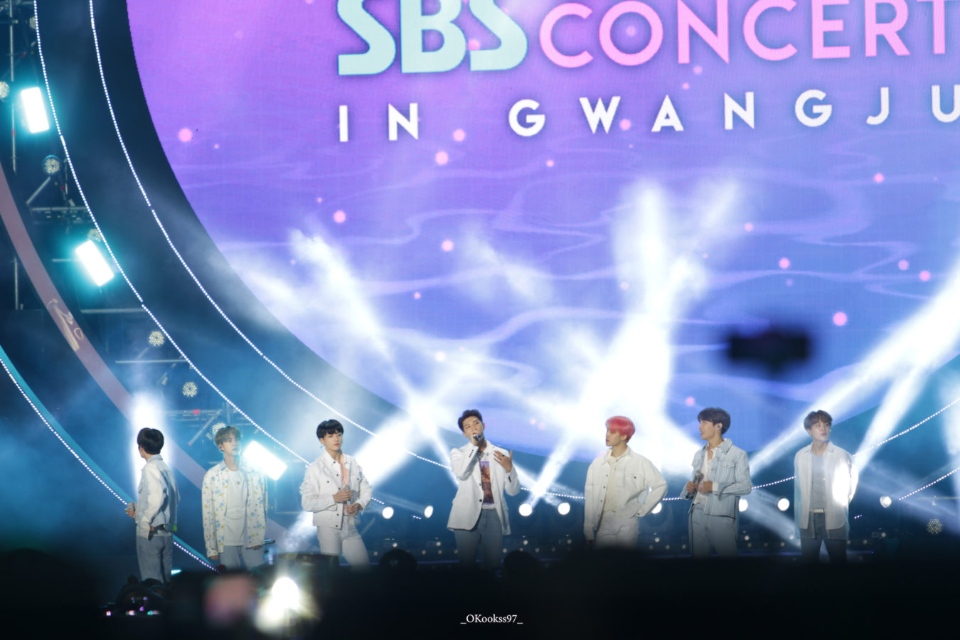
2019 was the year that not only the people of Gwangju are excited but the whole of Korea is also very excited, information about Gwangju is constantly on the big news, LED screens on the subway ‘Celebrating for the sports championships’ water sports FINA 2019′.
With such a huge capacity and modern equipment, I believe that in the not too distant future, this stadium will be used to hold performances of Kpop groups, which is worth looking forward to.
Sajik Park & Observatory
Address: 49 Sajik-gil, Nam-gu, Gwangju
How to get there: Culture complex station, exit 3
Opening hours: 9AM-10PM
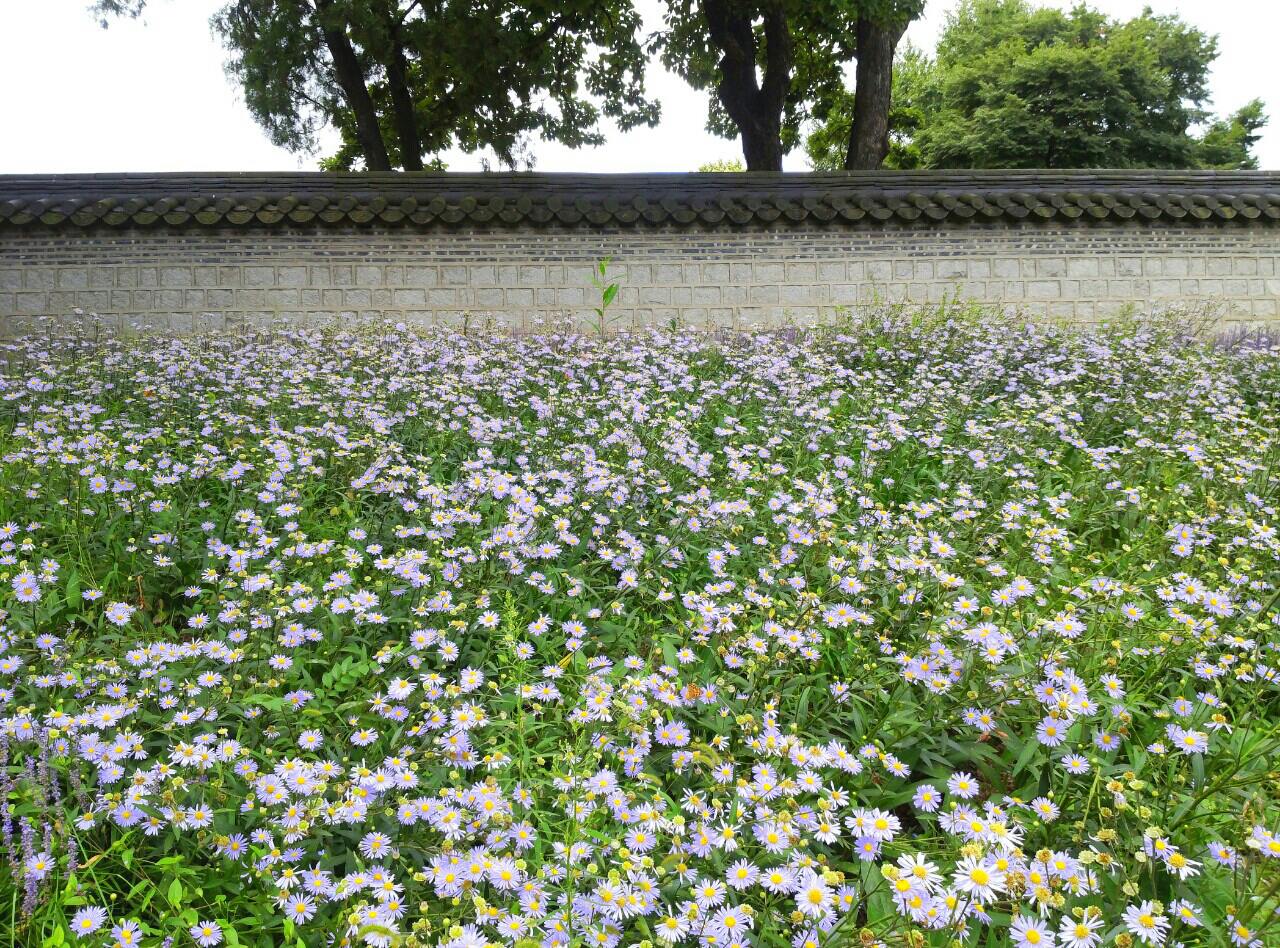
The famous Sajik Park attracts a large number of visitors every year. Attracted even more by the cherry blossom festival and the observation tower. The observatory on the top floor allows visitors to use binoculars for free so they can admire the overwhelming beauty of the whole city of Gwangju, and at night it’s great to enjoy the night view. Along the stairs you will pass art galleries showing historical paintings of Gwangju.
The end of March and the beginning of April will be the best time to admire the ecstatic beauty of cherry blossoms, very poetic.
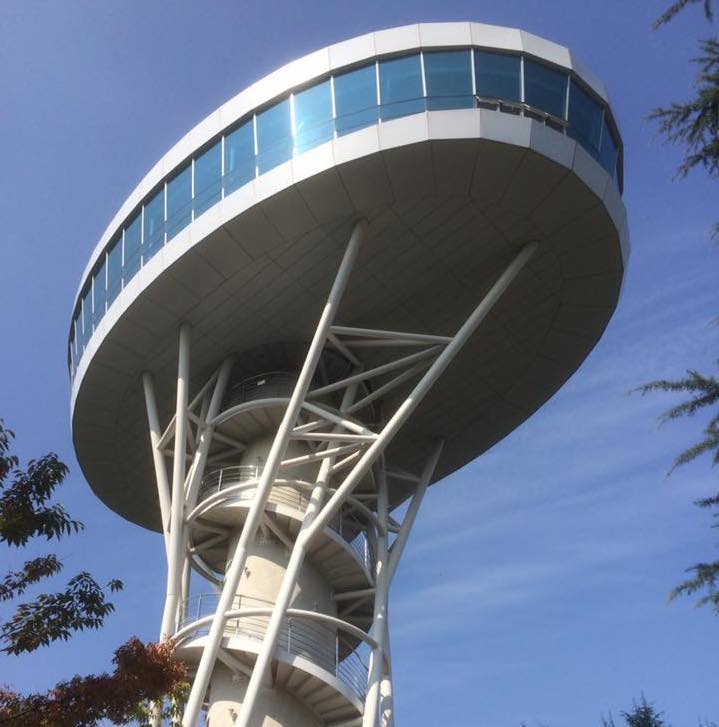
Asia Culture Center
Address: 38 Munhwajeong-ro, Dong-gu, Gwangju
How to get there: Culture Complex Station
Hours: 10 AM–6 PM/Monday: Closed
Asian Culture Center is a culturally diverse architecture with a unique structure that combines a park above ground and underground works. Even inside the building, you can still see the scenery outside. With lights at night this architecture becomes even more attractive and worth visiting.
Mudeungsan National Park
Address: South Korea, Gwangju, Buk-gu, Mudeung-ro, 1550
If you love hiking, then Mudeungsan National Park is the ideal destination for you. At an altitude of 1187m, you can enjoy a panoramic view of Gwangju city. You should start from Wonhyo-sa temple, where keeps the clock of more than 300 years old. Then start following the trail to the top of the mountain.
Although the road is very steep and arduous, the fresh air here will make you forget all your fatigue. On the way, you will see two famous cliffs Seoseok-dae and Ipseok-dae in this locality. After exploring the natural scenery here, you can visit the Uijae art museum, about 250m from the park to admire the works of the late famous artist Heo Baek-ryeon.

To get to this Gwangju tourist spot, you need to take a bus from the city center for about 30 minutes. To avoid overcrowding with tourists, you should come here on weekdays and avoid going on holidays.
Gwangju Family land
Address: 677 Uchi-ro, Buk-gu, Gwangju, South Korea
Hours: 9:30 AM–6 PM
Entrance fee: 6,000 won
How to get there: Hwajeong Station
This is an amusement park for families when coming to Gwangju city. The park is extremely large and has countless games comparable to the top theme parks across Korea. So every day the park welcomes hundreds of tourists to visit, the service quality here is also very good. The highlight is that the tracks of the roller coaster are mixed with nature to give visitors the most authentic feeling possible.
In addition, the amusement park also has a series of world-leading miniature architectural models such as the Eiffel Tower, the Golden Gate Birdge and more than 100 other icons that are globally famous landmarks. And if you are the romantic type, you cannot ignore the famous heart-shaped tunnel with the pumpkin carriage in the fairy tale Cinderella. This is a great place to have fun during the day and take pictures at night.
Boseong Green Tea Plantation
Address: 763-65 Nokcha-ro, Boseong-eup, Boseong-gun, Jeollanam-do, South Korea
Hours: 9 AM–6 PM
We mentioned Boseong tea h Plantation before, although the tea hill is not located in the Gwangju, it is very convenient if you include this place as a destination in combination with other places to visit during the day. The rolling hills of lush green tea fields are sure to leave you in awe. In addition, at Boseong Tea Hill you can also learn how to make tea leaves and enjoy tea while looking down at the green scenery.
Once you’ve reached the Boseong tea hill, don’t forget to take the 10 minutes to get to the nearby Yulpo beach. Enjoying the vast sea view, blue water after visiting the tea hill is an extremely reasonable combo. Next you can go to Yulpo Nokchatang with about 6,000 won entrance ticket to experience soaking in green tea water, a feature of this land.
Gwangju-KIA Champions Field
Address: 10 Seorim-ro, Buk-gu, Gwangju, South Korea
Hours: 6:30 PM–12 AM/Sunday: 5–10 PM/Monday: Closed
Ever wondered what a baseball game in a foreign country would be like? Gwangju-Kia Champions Field is a baseball field with a capacity of more than 22,000 spectators. Try to join and watch a baseball match here, it will definitely bring you many memorable experiences.
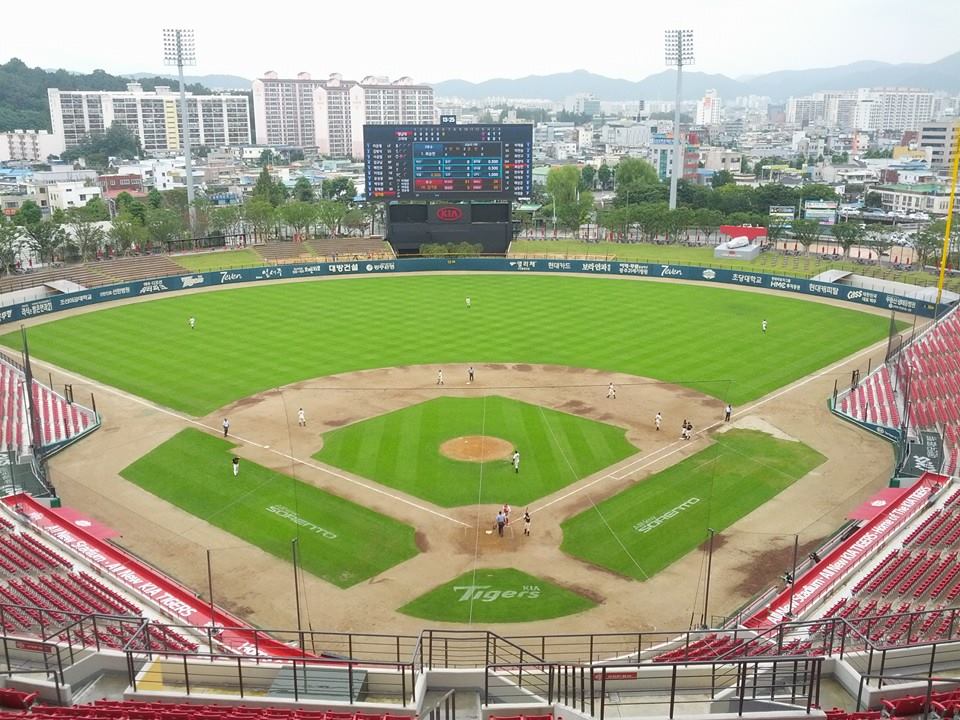
This is the home of the most successful baseball team in Korea, Kia Tigers. If you want to watch them play, don’t forget to carefully check the time the matches take place. Baseball season begins in April and lasts until November of the year. Matches usually start from 5:00 p.m. to around 6:30 p.m.
What to eat?
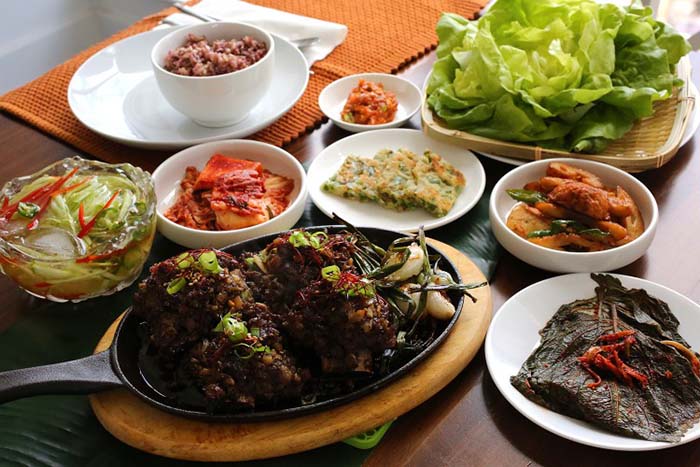
If you go to Gwangju, you must try the specialty of this region, which is Tteokgalbi (Short Rib Patties)). It’s not difficult to find a Tteokgalbi shop, but to find the best one, you will need a little more time to find the one, I spent quite a bit of effort to find it but it’s worth it.
Tteokgalbi
If you come to Gwangju, you must try Tteokgalbi. This dish is made from minced ribs, then mixed with spices such as herbs, onions, and garlic. The chef will skillfully mold into small balls and bake them on a charcoal stove. Because the piece of meat is shaped like rice cake, locals often call it short rib patties.
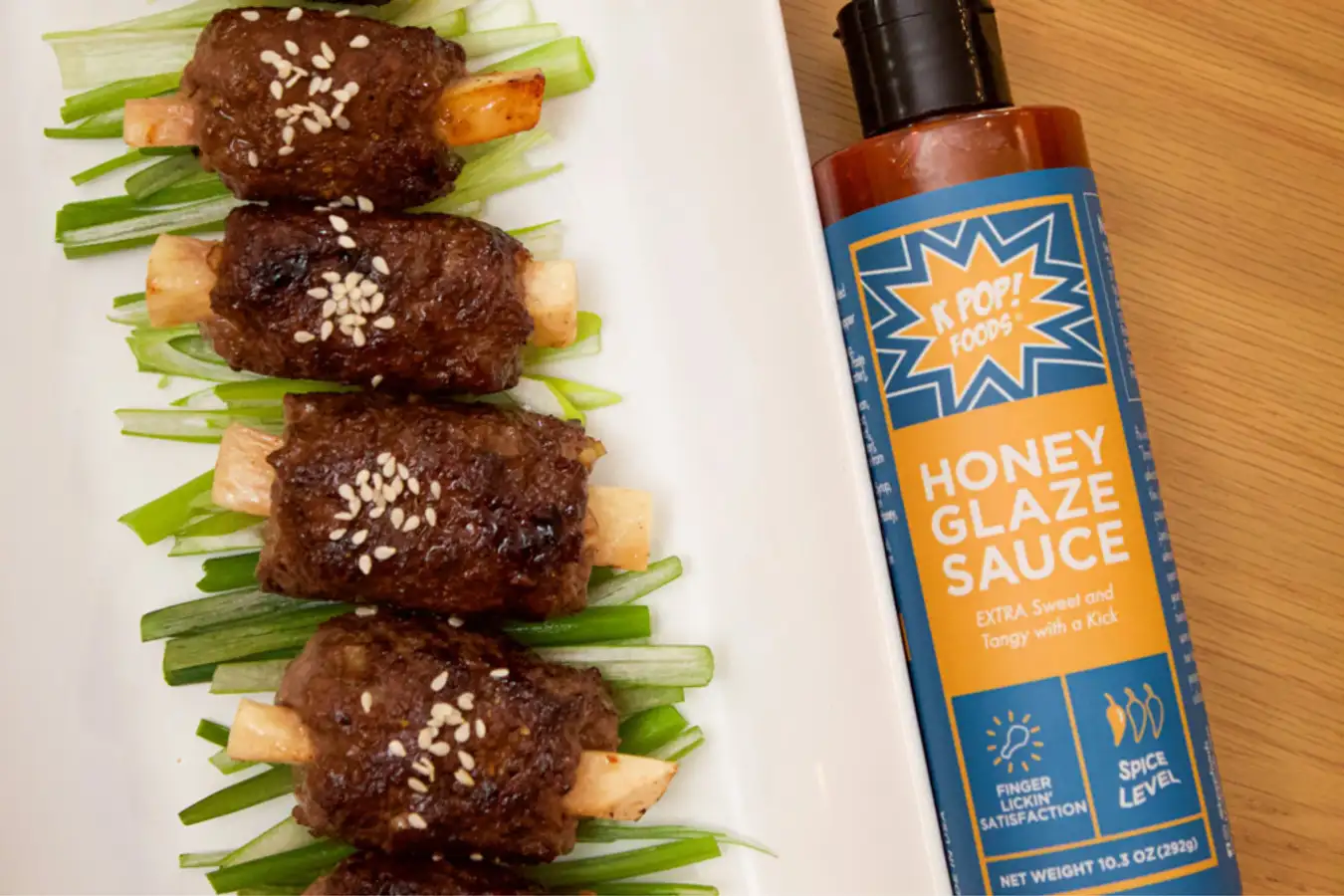
For the ultimate taste of Tteokgalbi, stop by Tteokgalbi Songjeong alley in Gwangju San district. Here, you can find many shops selling traditional Tteokgalbi in Gwangju.
Boribap (Rice and Barley with Vegetables)
Boribap, or Mudeung Mountain Barley Rice, is also one of the famous dishes in Gwangju. Tourists flock to the rice village and barley rice alley to enjoy this dish. You can choose The Resting House, Barley Rice to experience the unique taste of Boribap.

The meal here will include white rice and more than 21 varieties of vegetables. Locals will mix rice and vegetables, then add chili sauce and sesame oil to make the taste more attractive. This dish not only tastes delicious but is also good for health.
Gui
Gui is the common name for all grilled dishes in Korean cuisine. Grilling is one of the most popular cooking methods in this country. Traditionally, every table in a Korean restaurant has a hole in the center of the table to place a grill over charcoal or gas.
Initially, all the fresh ingredients will be presented on the plate. After that, customers will prepare their own dishes according to their own preferences. Beef, chicken, and pork are the three most famous meats, commonly used in barbecues in Gwangju.
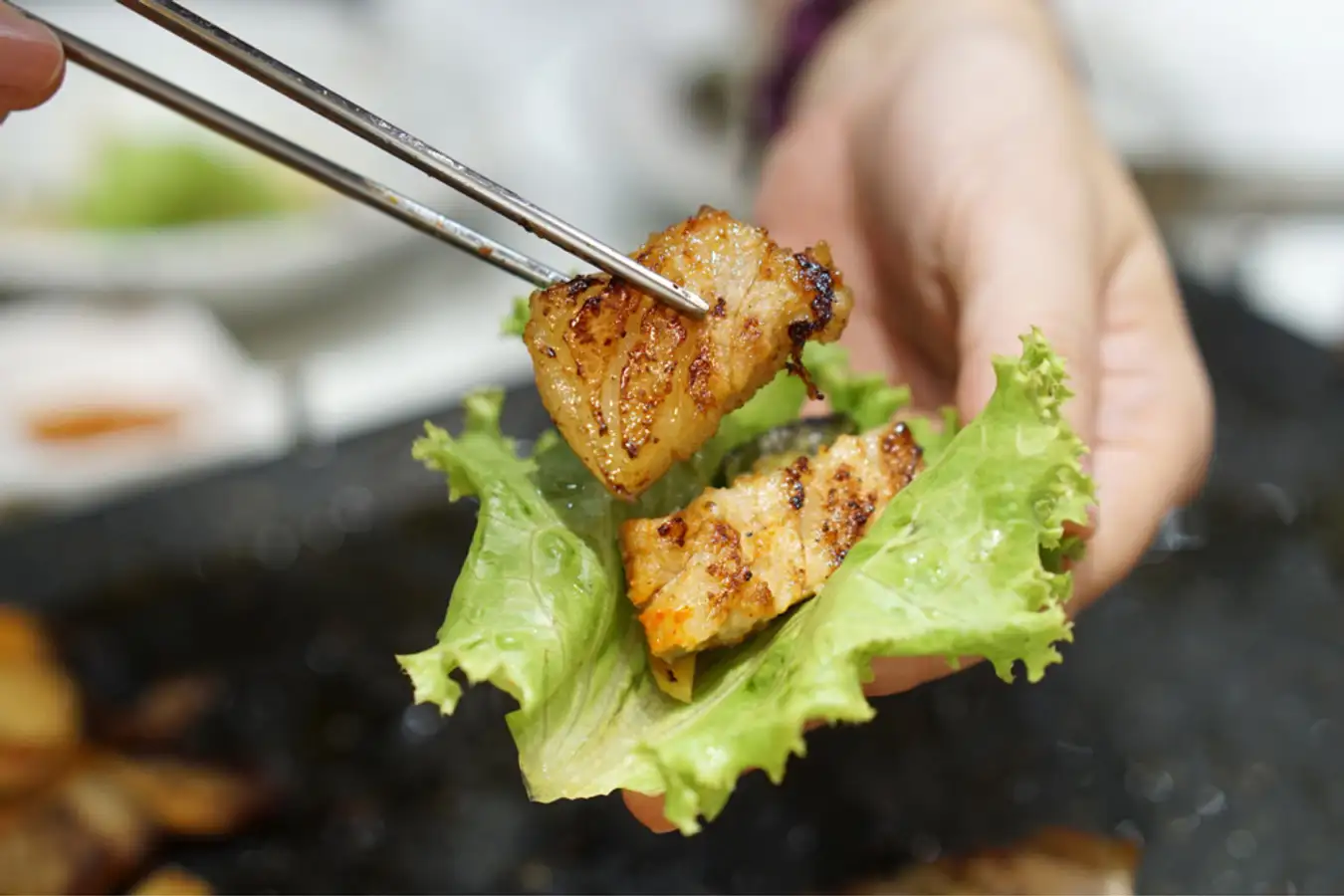
Saesongjeong restaurant
Address: 761-1 Geumam 1(il)-dong, Deokjin-gu, Jeonju-si, Jeollabuk-do, South Korea
Phone: +82 63-251-7701
It is no exaggeration to say that this restaurant is the most famous restaurant in the region that has been reported by both Korean TV stations and has a few variety shows to film by KBS, SBS and MBC. The meat here is very soft and fragrant, not to mention the side dishes are also very diverse, the waitresses are very lovely, when see me have just run out of side dishes, they will bring more food to eat, and also give some snacks because I am a foreign guest. Honestly, wanting to fall in love with the people in Gwangju, so cute.

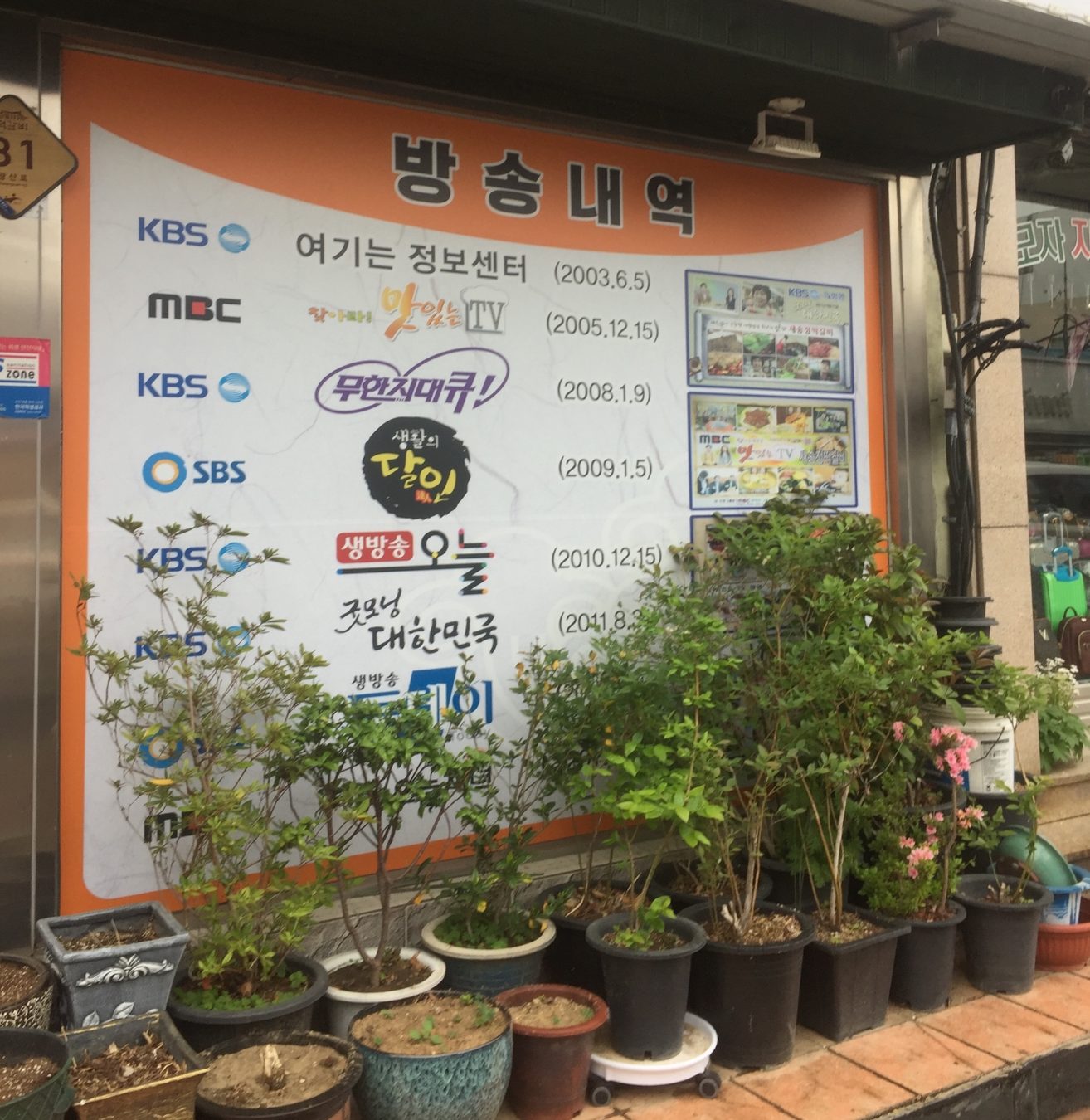

If you are a Kpop fan or Army in particular, you will regret it if you miss visiting the famous Idol training academy in Gwangju, Joy Dance – Plug In Music Academy
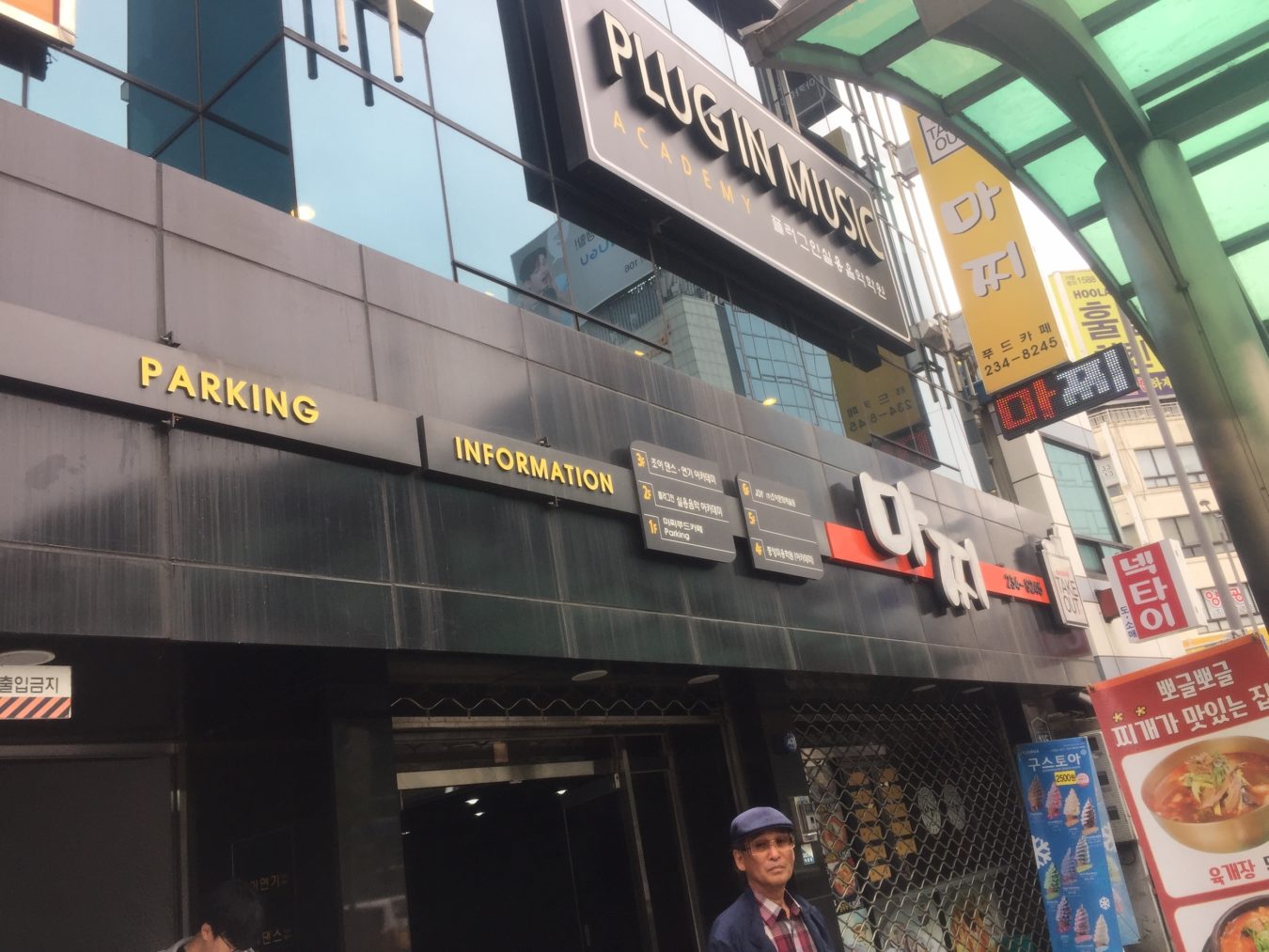
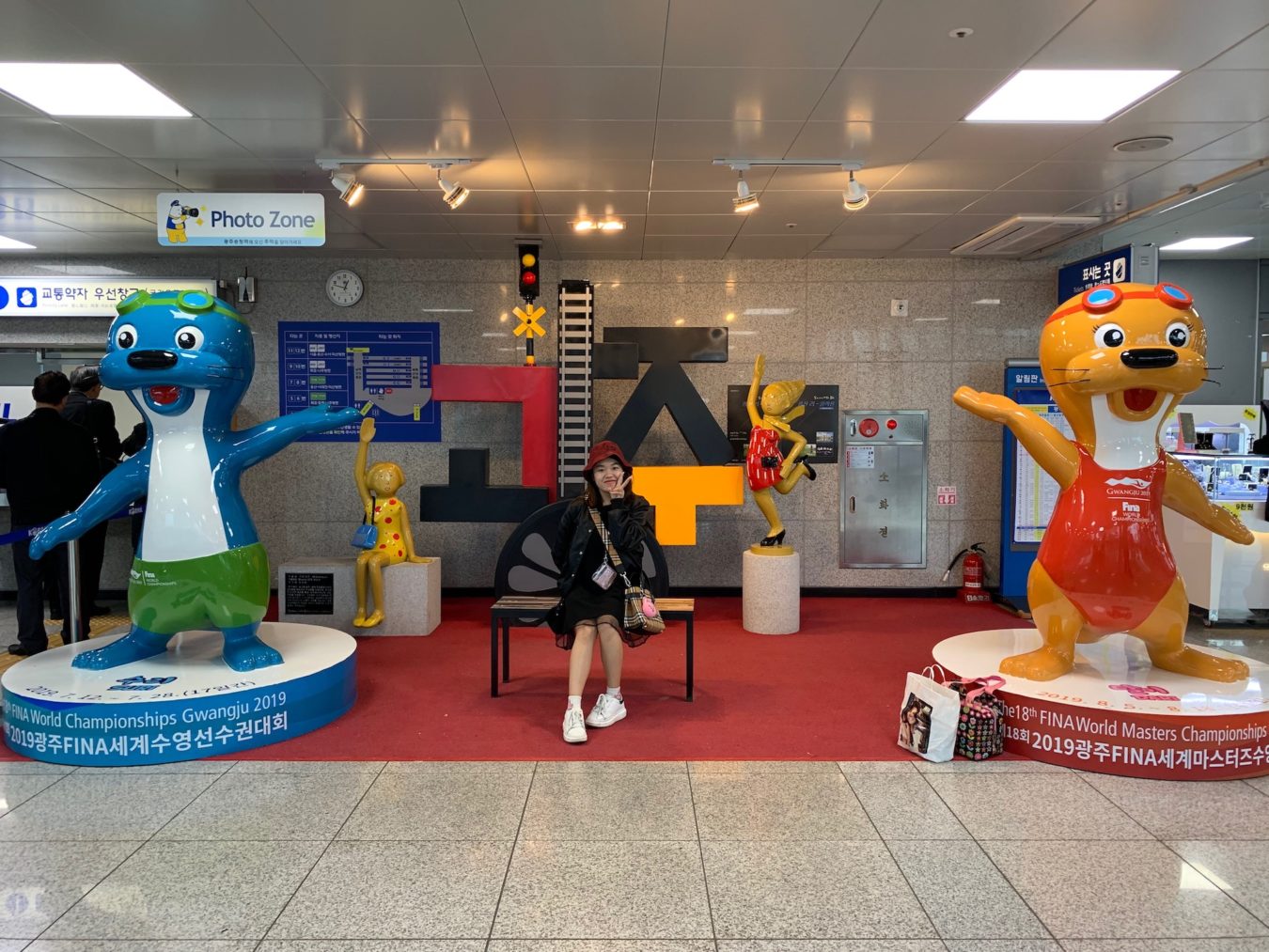
Where to stay?
Experience sleeping at Hanok house (traditional house)
Whether it’s winter or summer, when you go to Gwangju, you still try to book a hotel as a Hanok (old house) because the Hanok house’s characteristics are that the winter will be very warm and the summer is very cool, in addition, the architecture of the old house. There are also very special floors and porches in front of the house, if in Seoul you can only visit the Hanok house, in Gwangju you can experience sleeping there, why not book a room to try it out.
When I went to Gwangju, I booked a room at Dasomchae Hanok Hotel and to be honest, I really liked this place, when I first read the reviews about this place, everyone said it was good, when I stayed, I found the review was correct. This hanok is really worth the money, not too expensive, but the owner is very friendly, the hanok is very beautiful, the indoor flower garden is also very well taken care of, the house is also covered by many television stations such as SBS, KBS… Rooms are always full, trust me this is really a memorable experience when you go to Gwangju. Rental price: around $50/night/double room. Free bike rental for riding around the city.
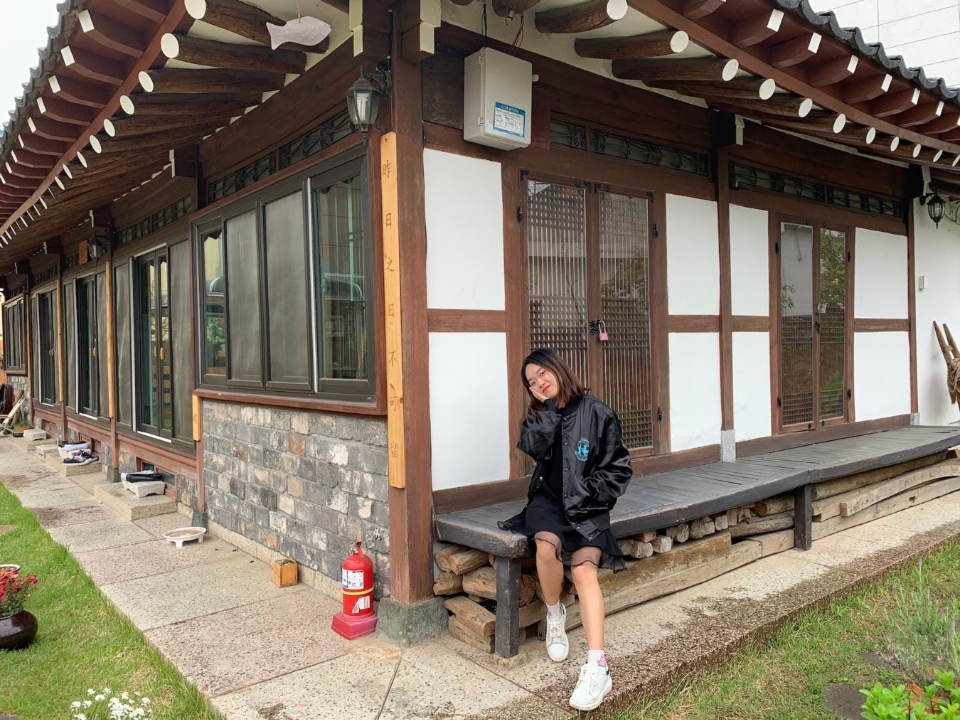
You can check rates, reviews and book on Agoda.com or Booking.com.
Below we recommend more best budget, mid-range and upscale hotels with good ratings and reviews you can refer to.
- ACC Design Hotel (Agoda, Booking)
- Holiday Inn Gwangju, Korea, an IHG Hotel (Agoda, Booking)
- Ballantine Hotel (Agoda, Booking)
- Bentley Tourist Hotel (Agoda, Booking)
- Ramada Plaza Gwangju (Agoda, Booking)
- Athene Motel (Agoda, Booking)
- Dubai Hotel (Agoda, Booking)
- Gwangju Madrid Hotel (Agoda, Booking)
- Hotel Vantt (Agoda, Booking)
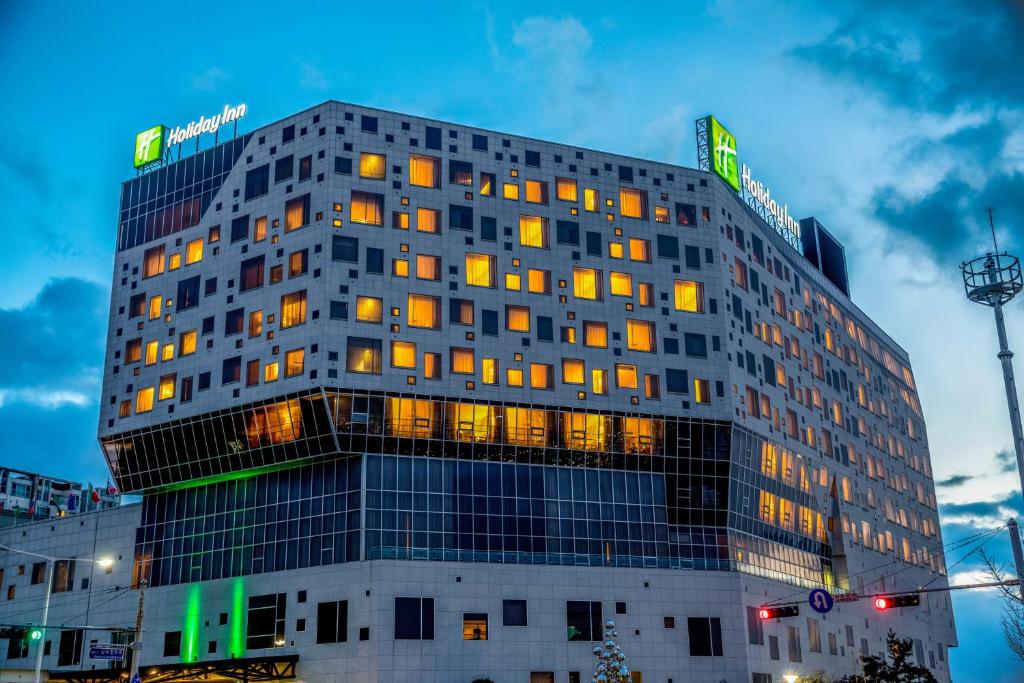
Check out more top and best hotels in Gwangju on Agoda.com or Booking.com
The city of Gwangju with a long-standing culture has become an ideal destination for tourists when coming to Korea. For the most convenient trip to Gwangju, please save the above sharing of Living Nomads.
Some best day tours, trips, activities and transfer services, tickets in and from Seoul you can refer to
- Private Incheon International Airport Transfers (ICN) for Seoul
- Private Incheon Airport Transfers (ICN) for Seoul
- Incheon International Airport (ICN) Limousine Bus Transfers for Seoul (Gangnam District)
- Klook Exclusive Seoul 5 Day Pass
- Discover Seoul Pass (BTS Edition Available)
- [SALE] Instant Ticket! Korea Rail Pass (KR PASS) 2/3/4/5 Days to travel around the cities in Korea
- Private Incheon Airport (ICN) and Gimpo Airport (GMP) Transfers for Seoul by S.A Tour
- Everland Private Car Charter with Admission Ticket by Wondertrip
- KAL Limousine Bus Ticket for Seoul
- [Limited Offer] AREX Incheon Airport Express Train One Way Ticket in Seoul
- Bukchon Oneday Hanbok Rental Experience (4/24 Hrs)
- Nami Island, Petite France, Garden of Morning Calm, and Gangchon Rail Bike Day Tour from Seoul
- Seoul City Sightseeing Bus (Downtown Palace Namsan Course/Seoul Panorama Course)
- [Limited Offer] Incheon International Airport (ICN) Luggage Services (Between Airport and Hotel) by Safex
- 4G Prepaid SIM Card (SK Airports Pick Up) for South Korea
- [Sale] Hanbok Experience (Hanboknam Gyeongbokgung Store) with Korean Hairstyling
- [SALE] South Korea 4G Pocket WiFi (KR Airports Pick Up) from KT Olleh
- 4G WiFi (MY Airport Pick Up) for South Korea (Unlimited Data)
- 4G Portable WiFi for South Korea from Uroaming (Unlimited Data)
Are you finding more top things to do in Seoul: Tours, activities, attractions and other things? Let’s check it out here.































![10 best airports in Asia in 2016 [RANKED] kuala-lumpur-international-airport-best airports in asia in 2016 by skytrax ratings](https://livingnomads.com/wp-content/uploads/2016/08/29/kuala-lumpur-international-airport-best-airports-in-asia-in-2016-by-skytrax-ratings-218x150.jpg)








